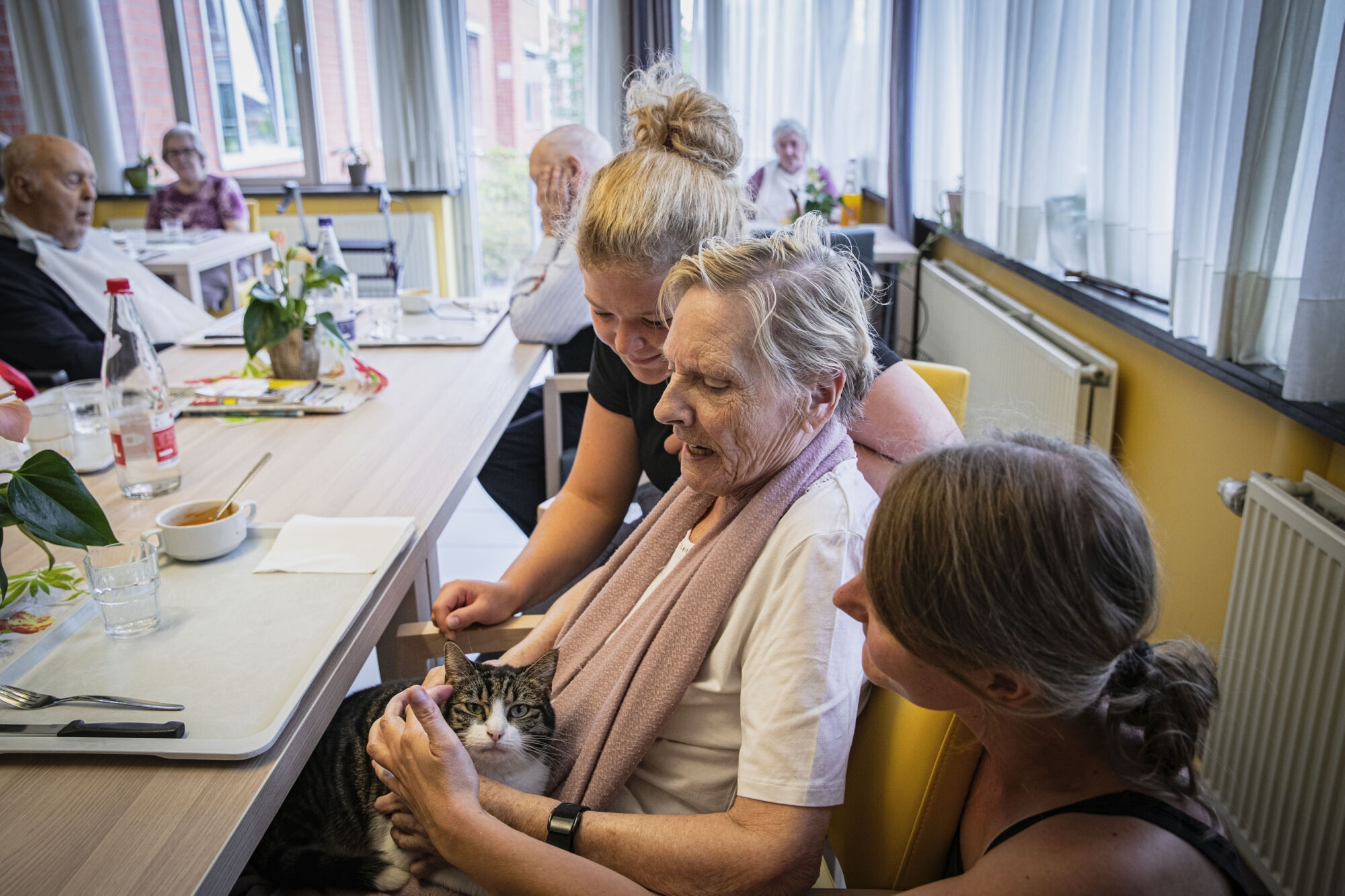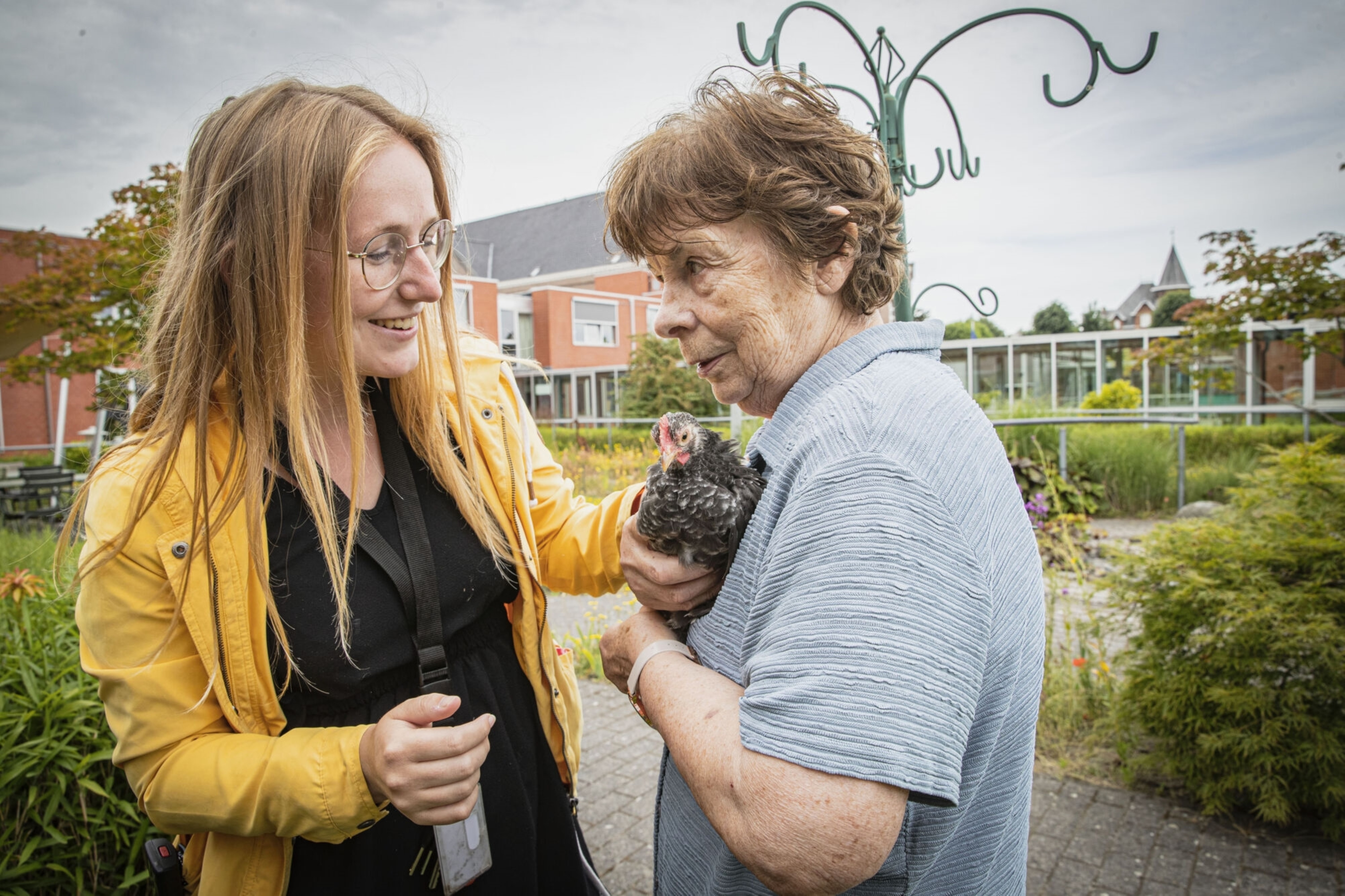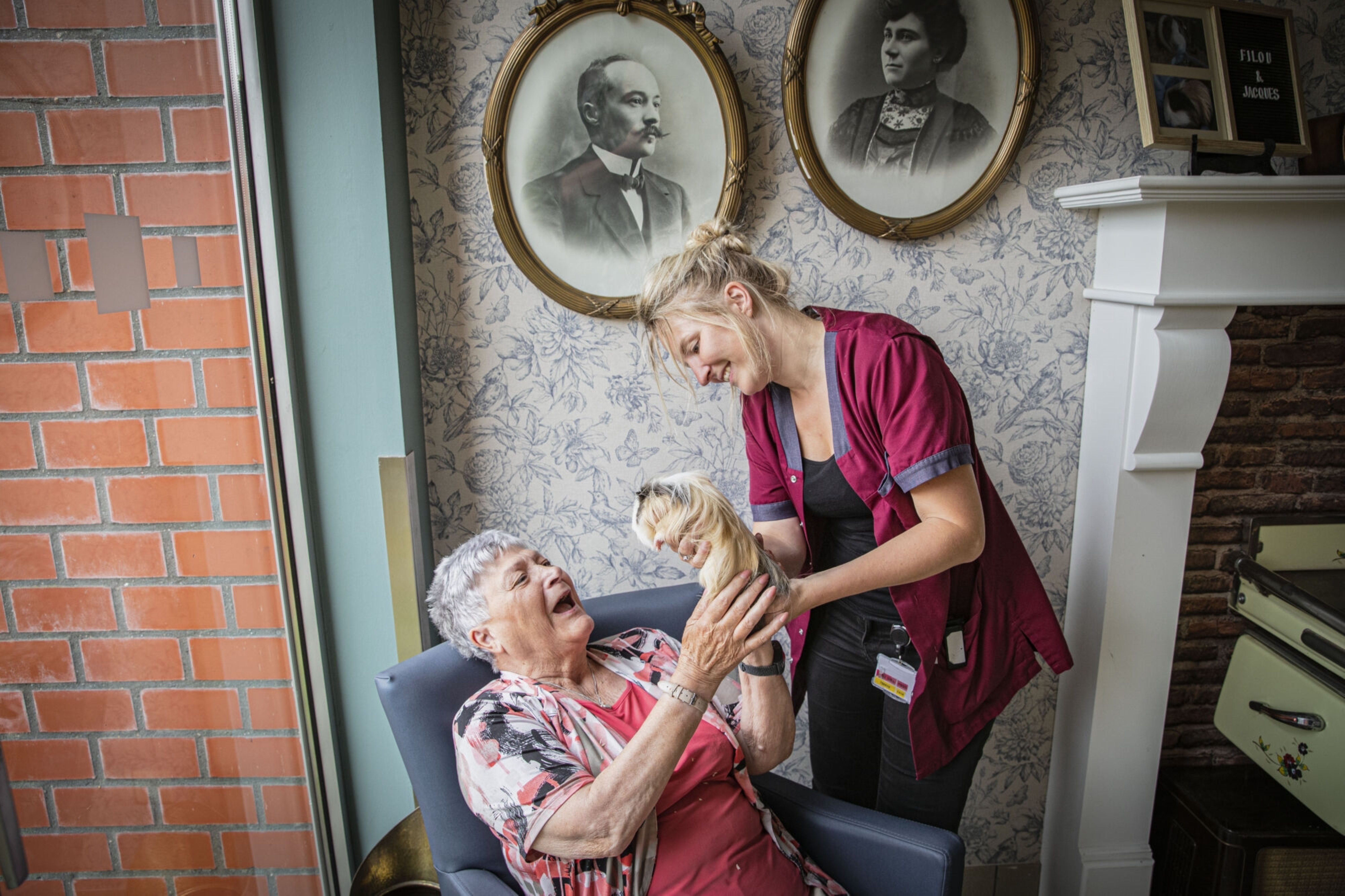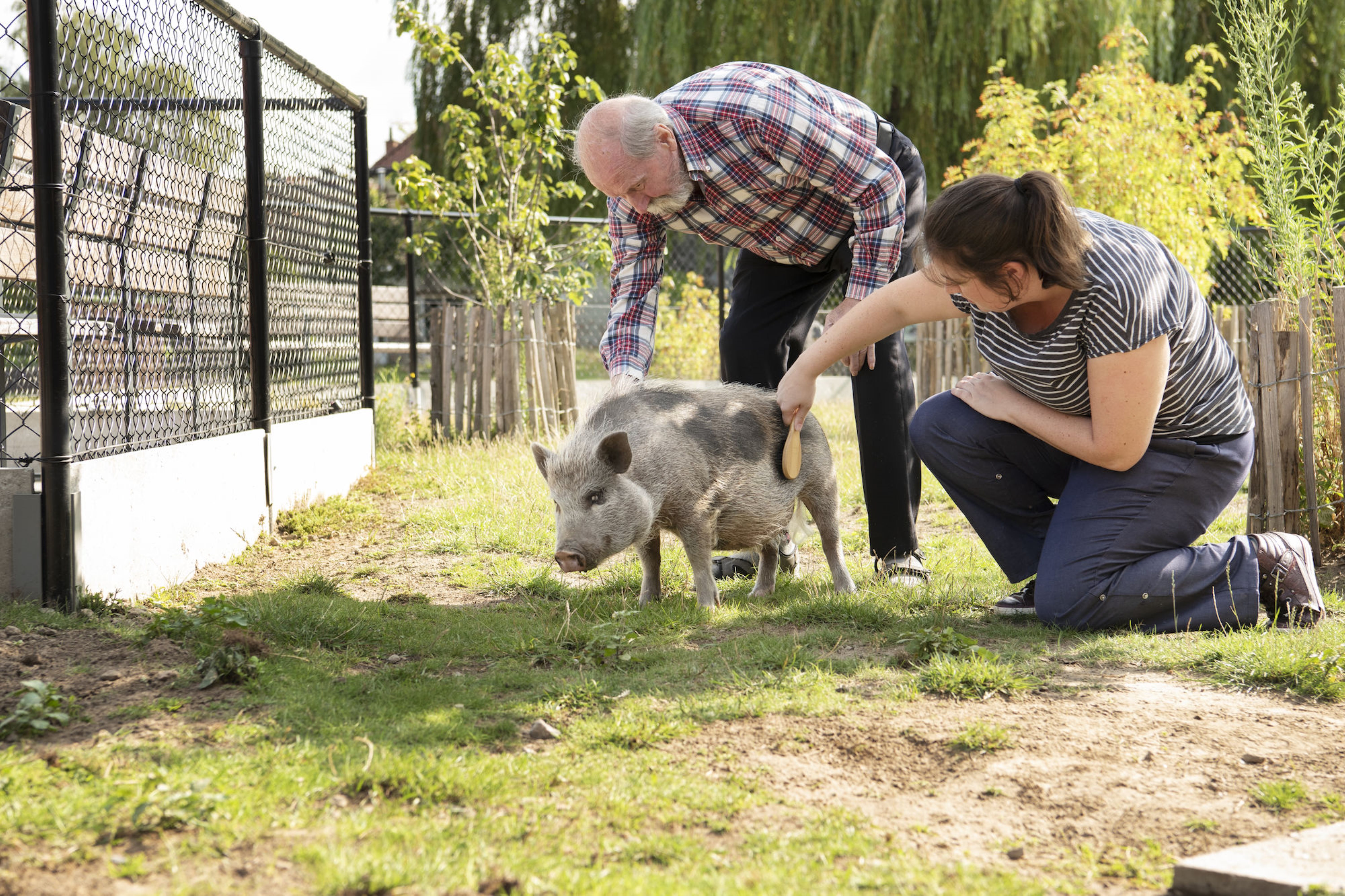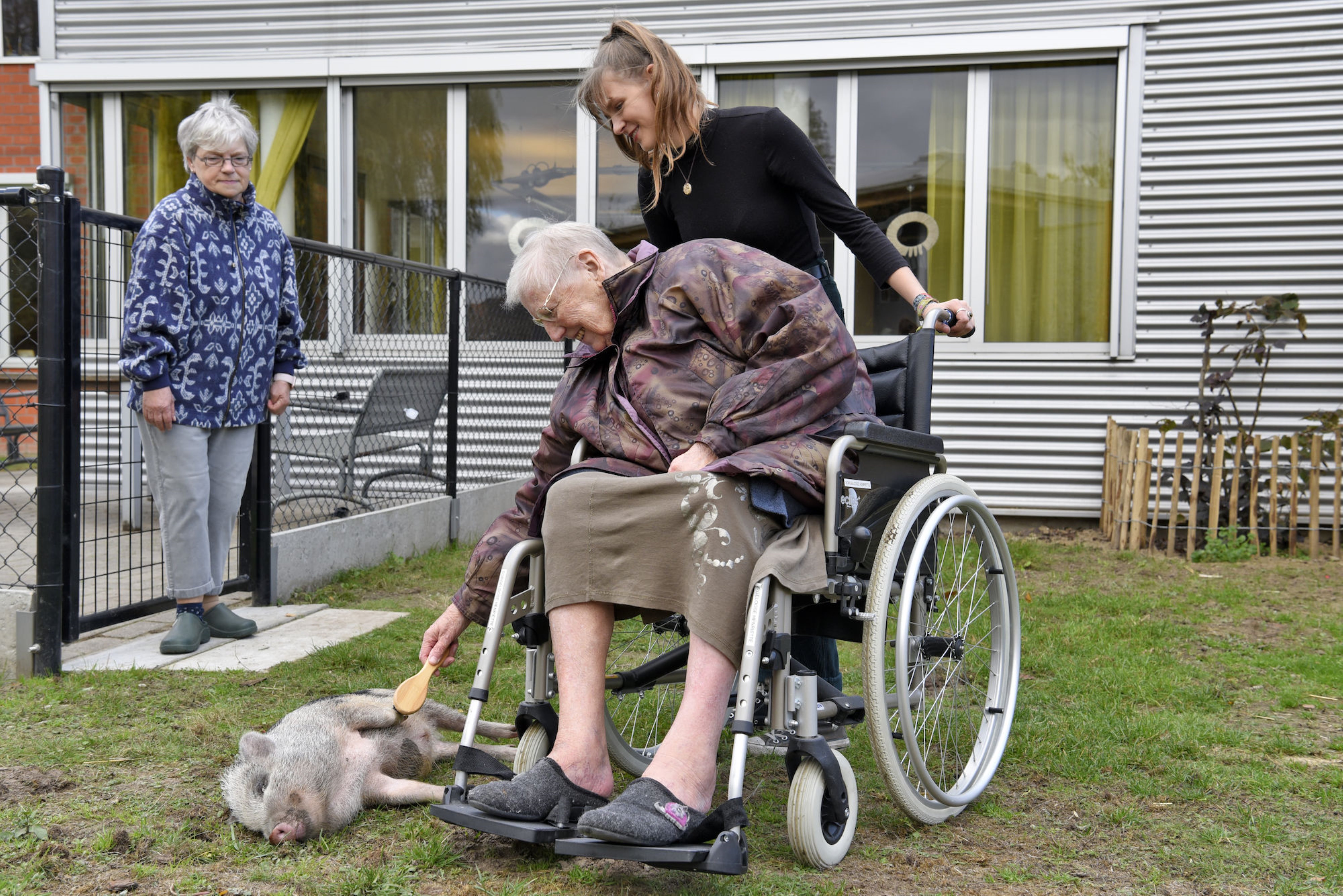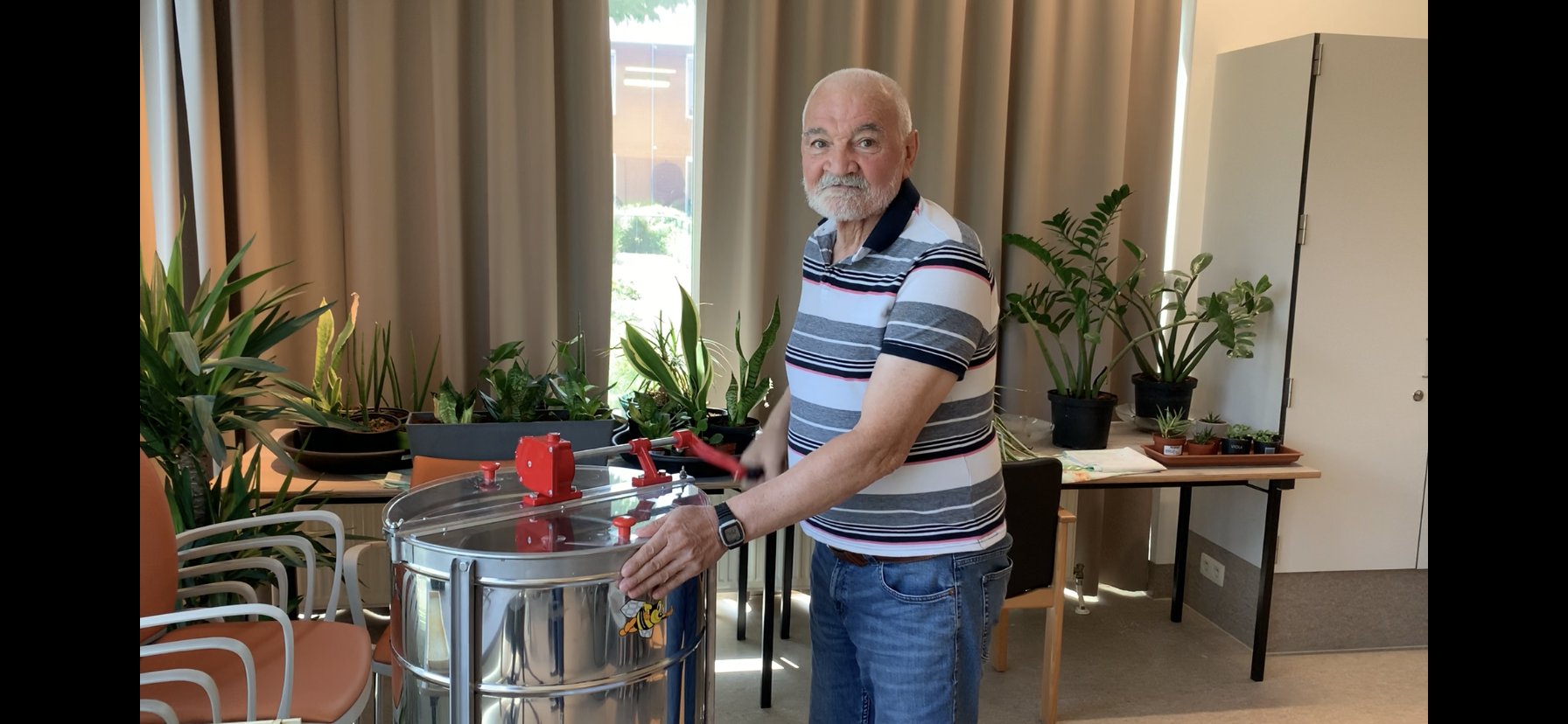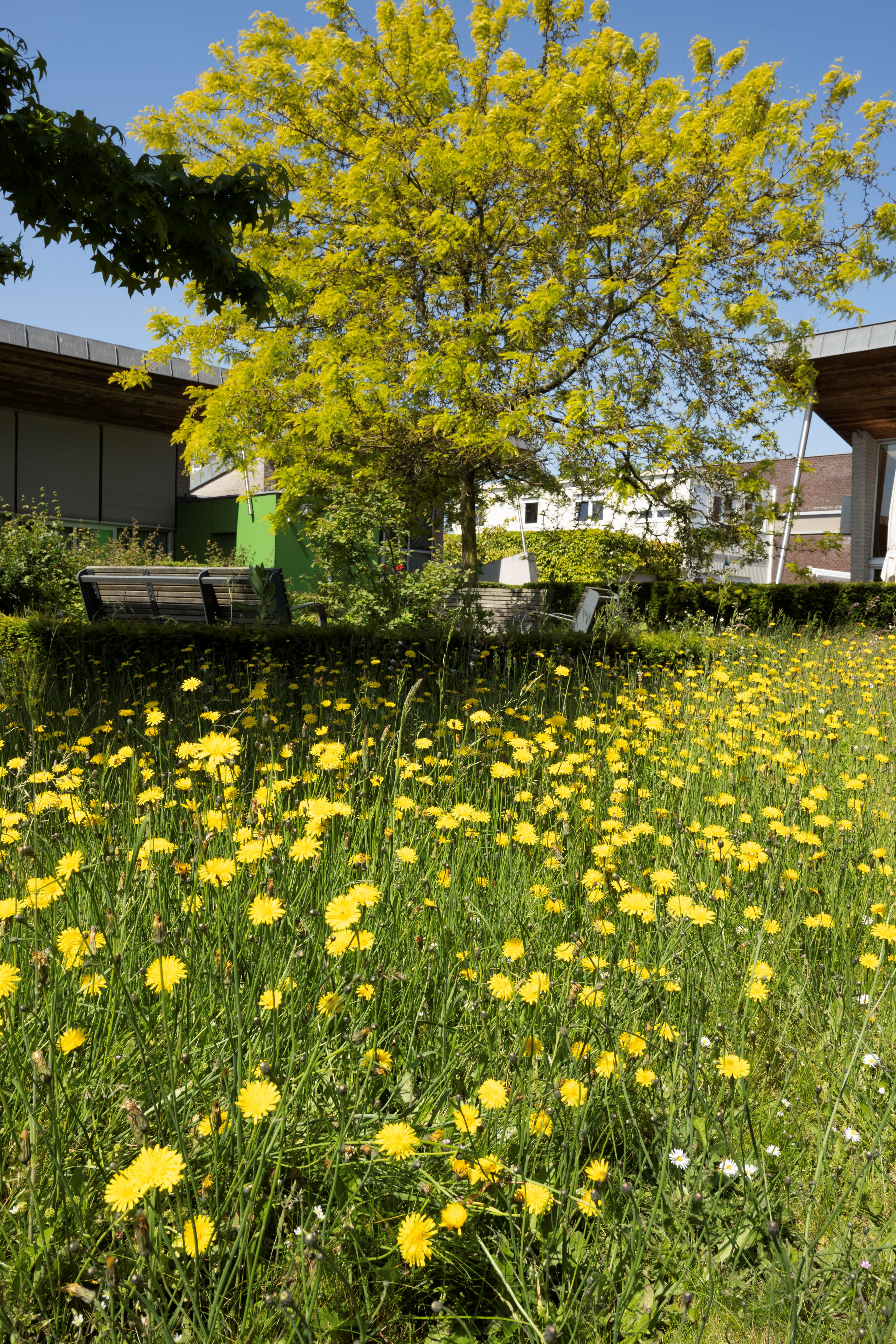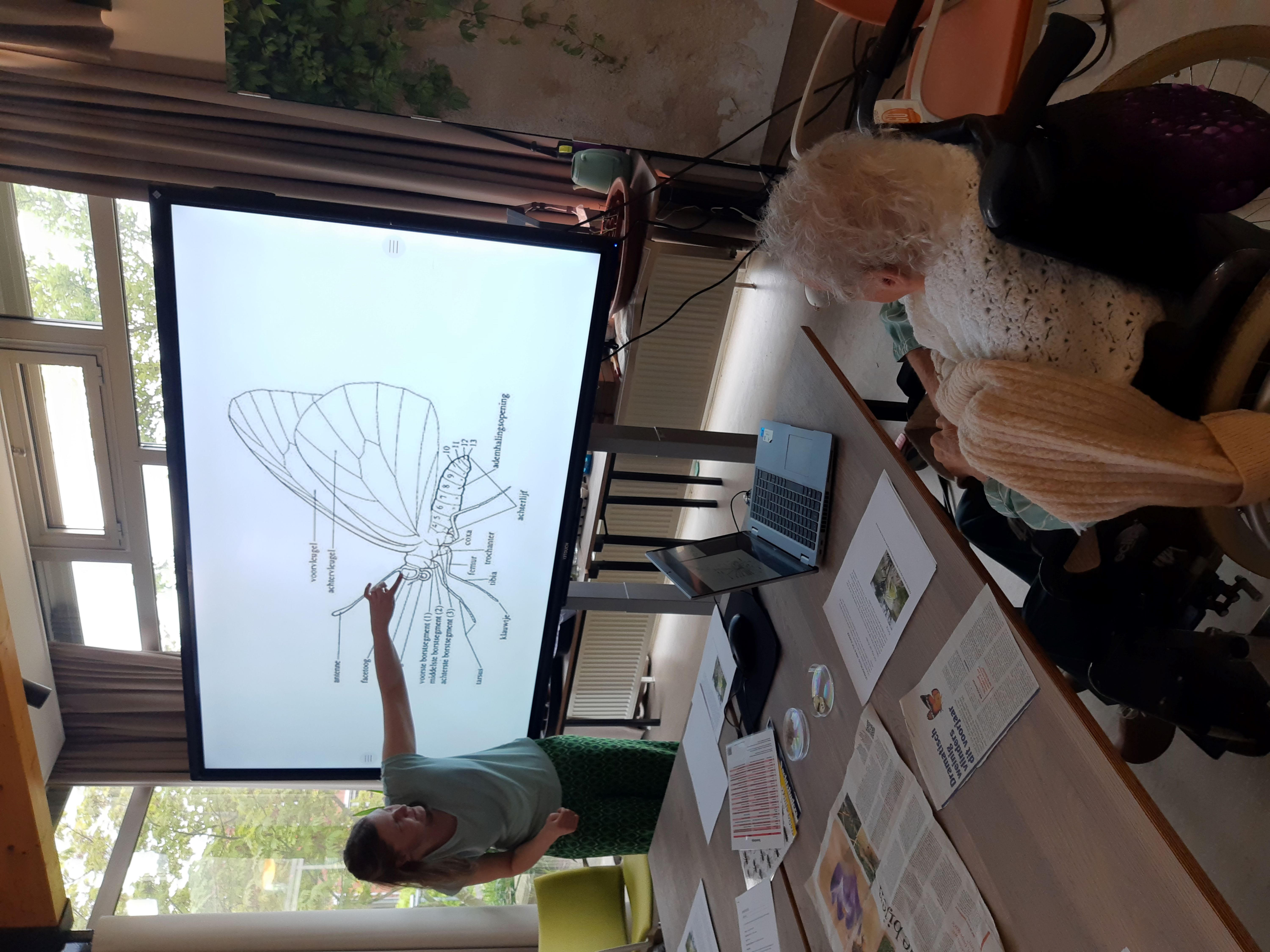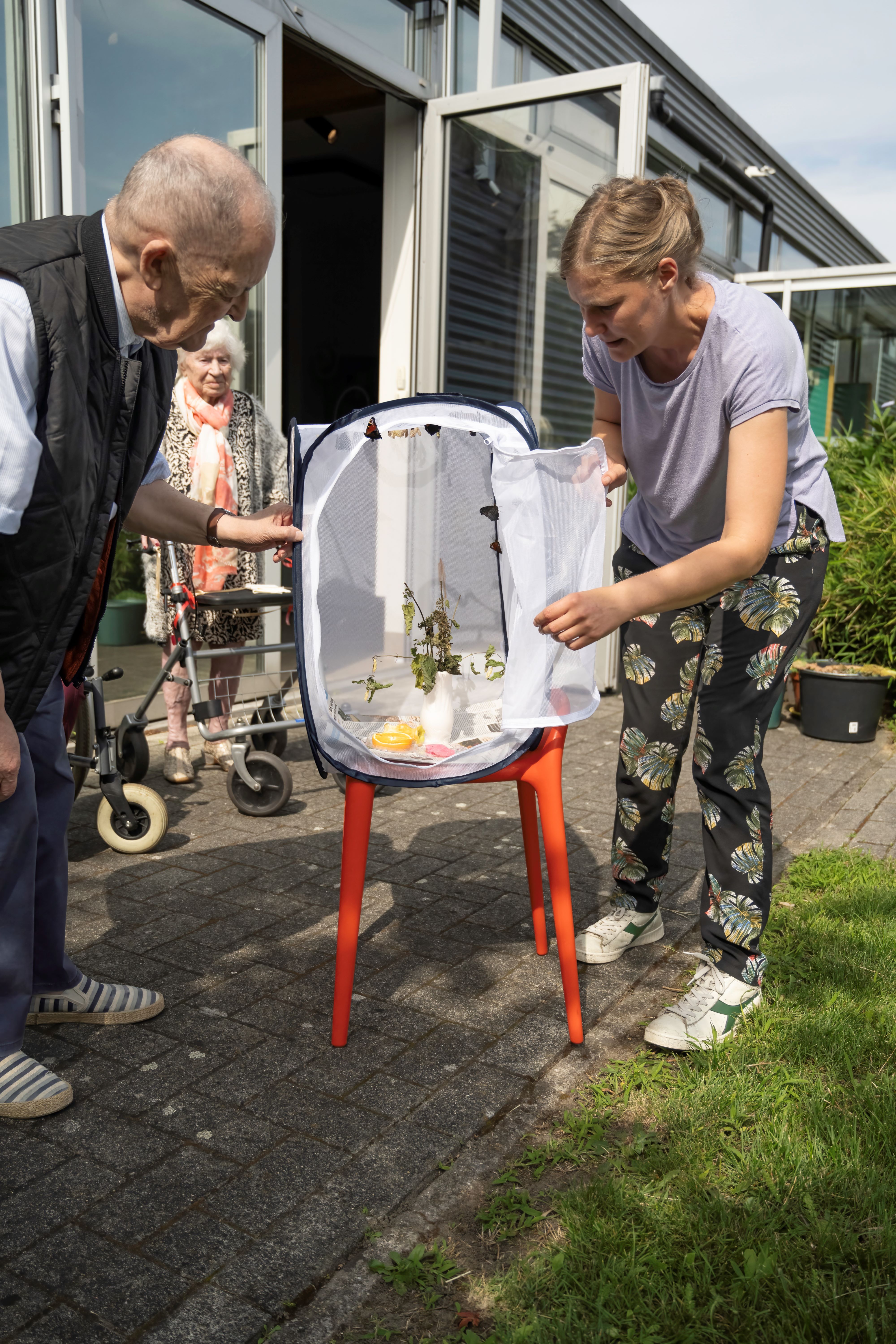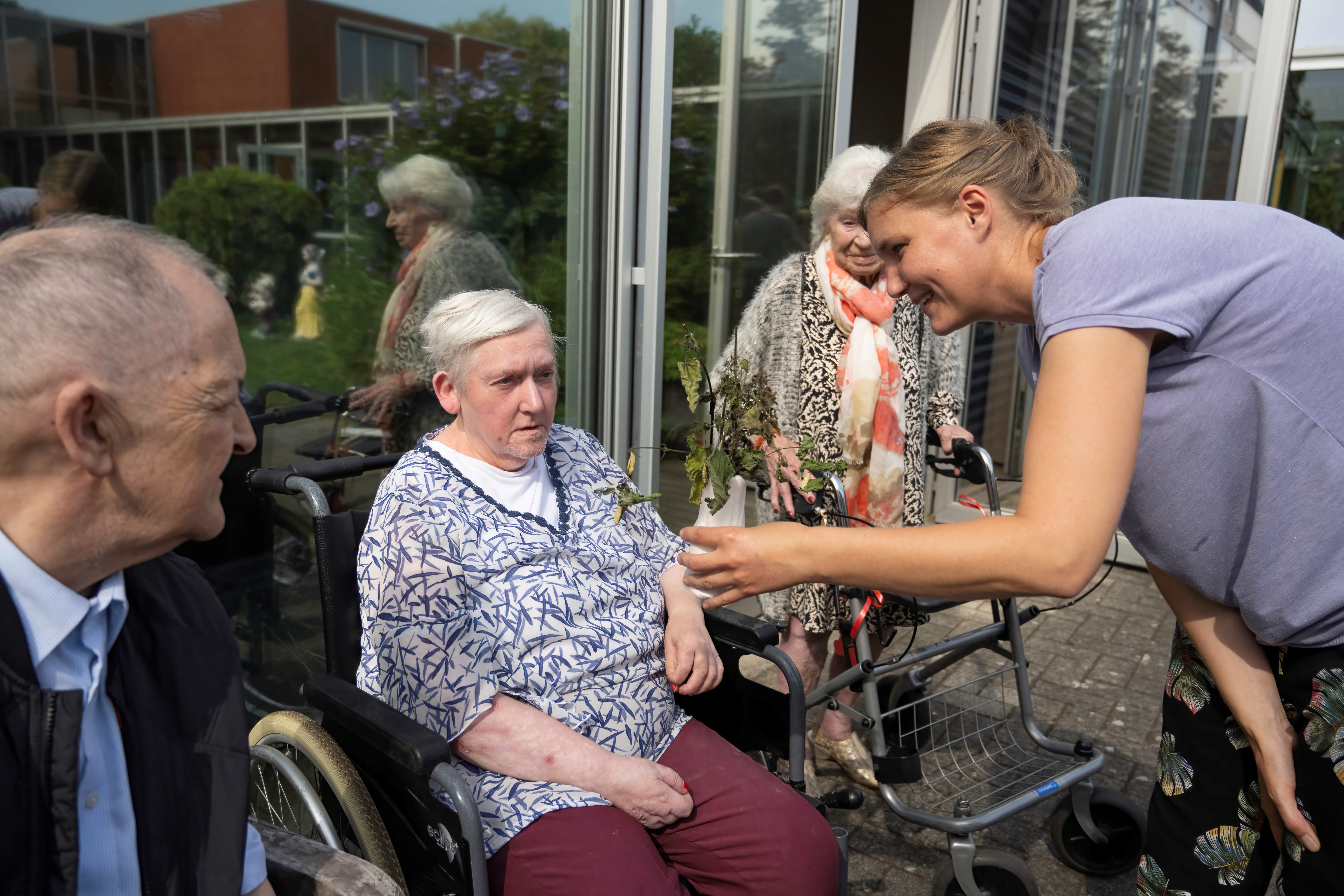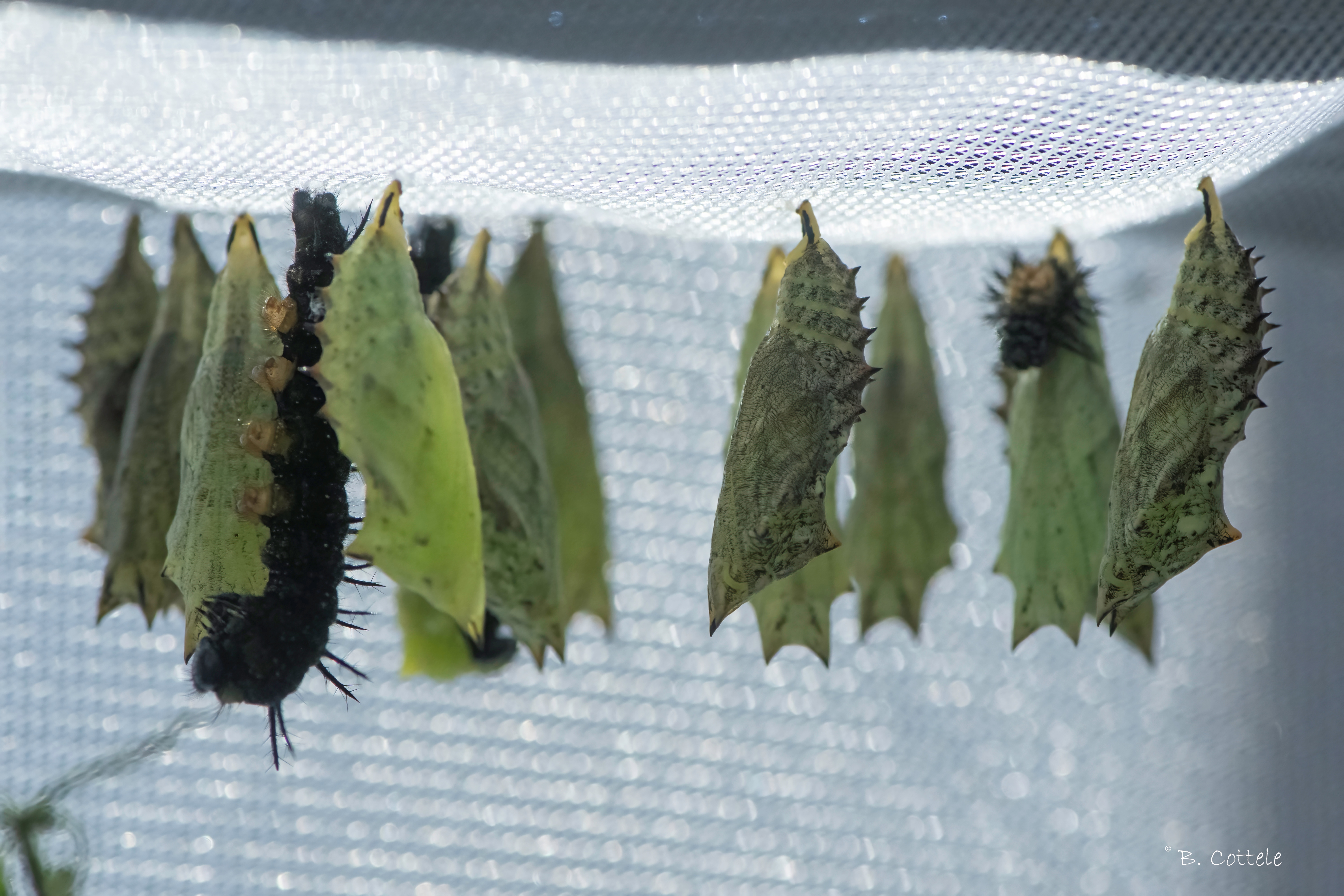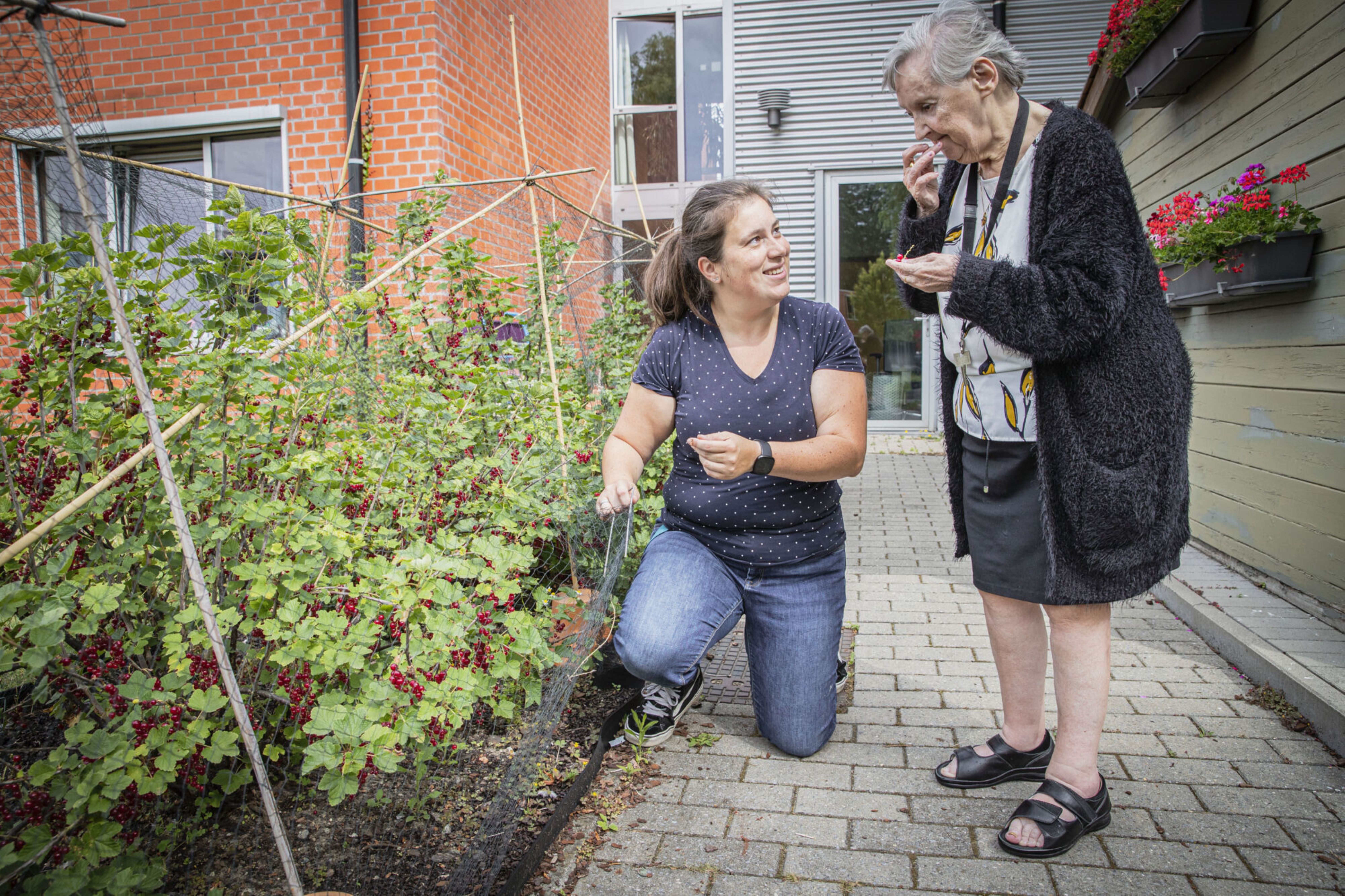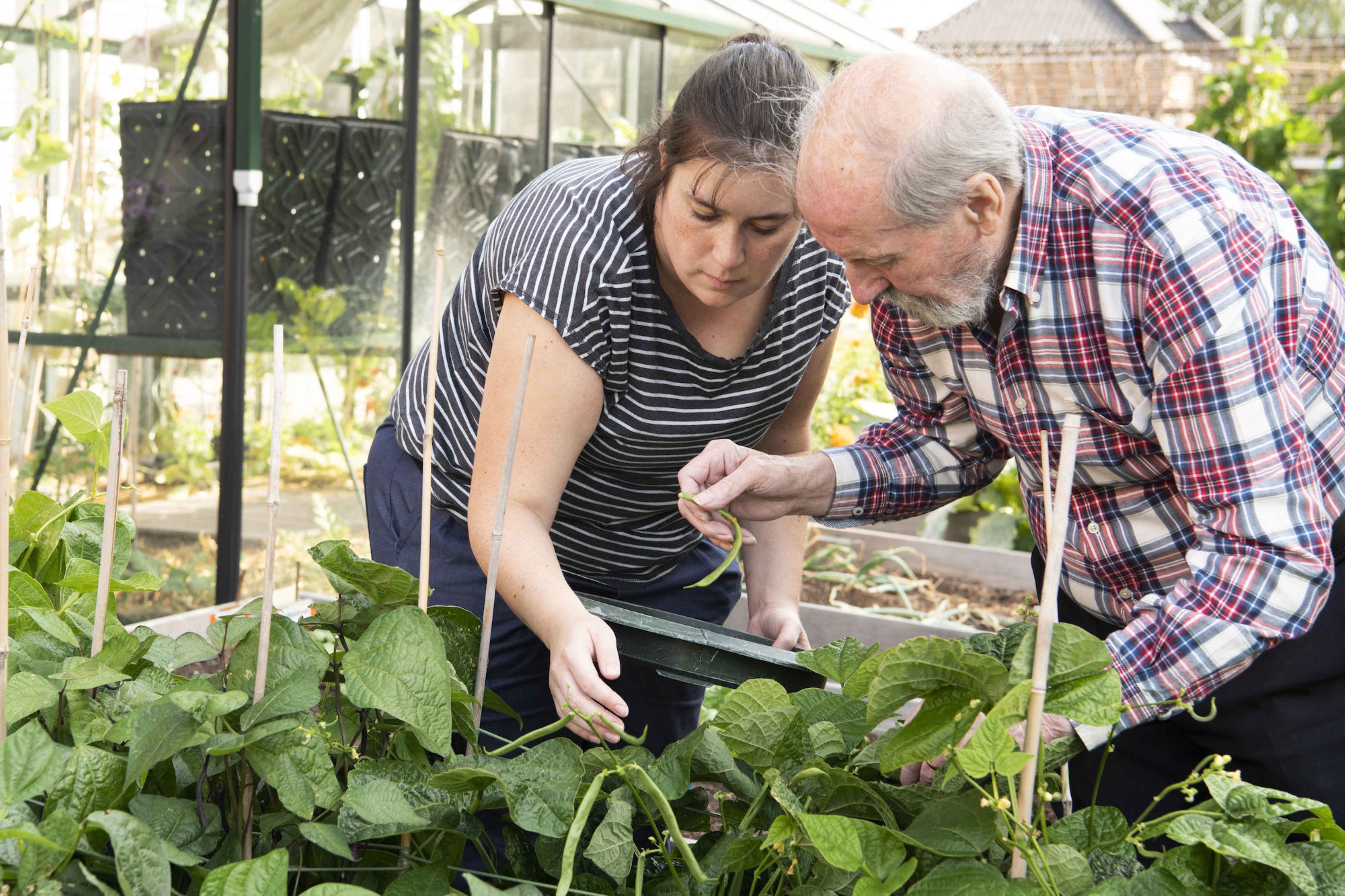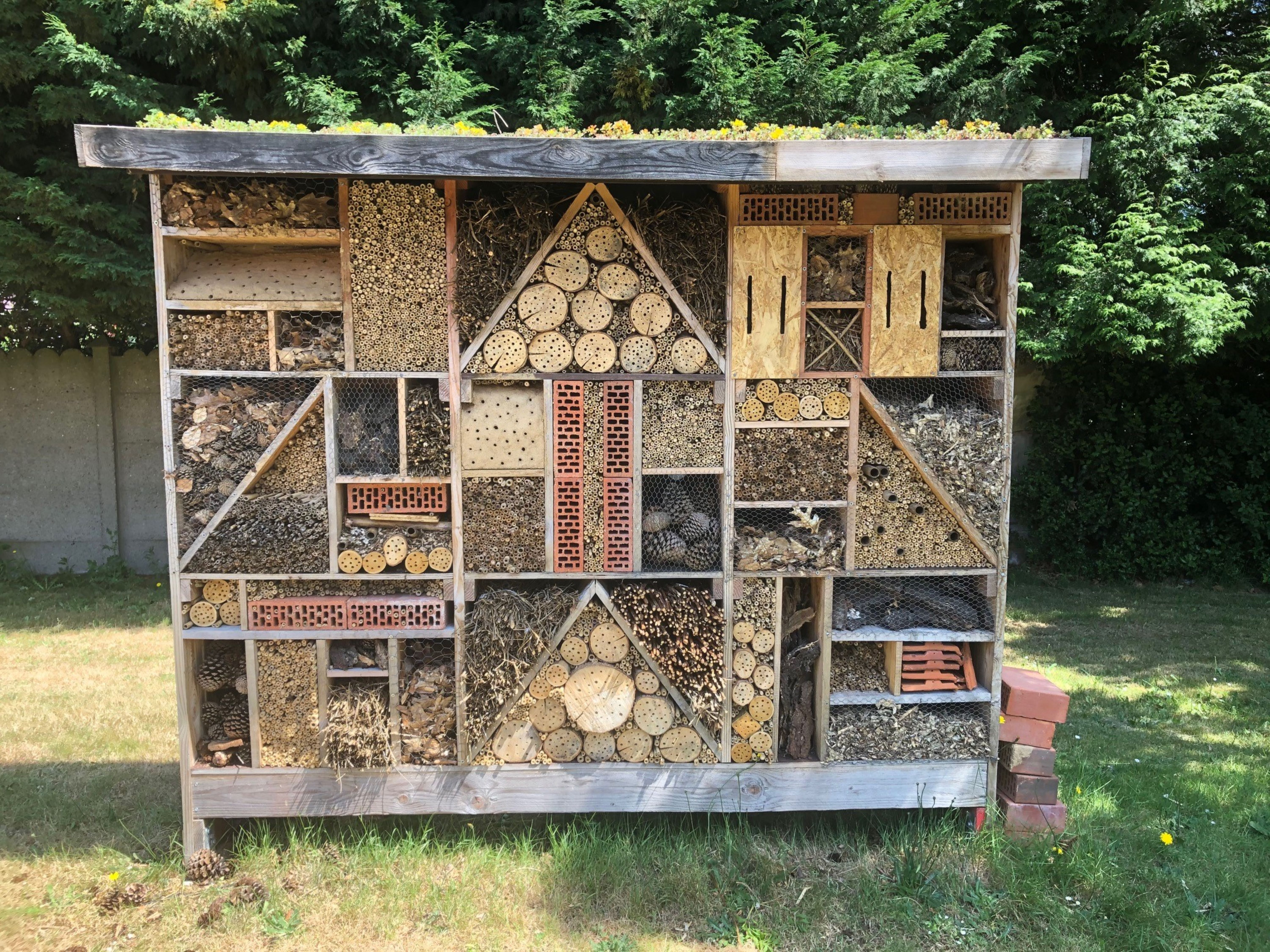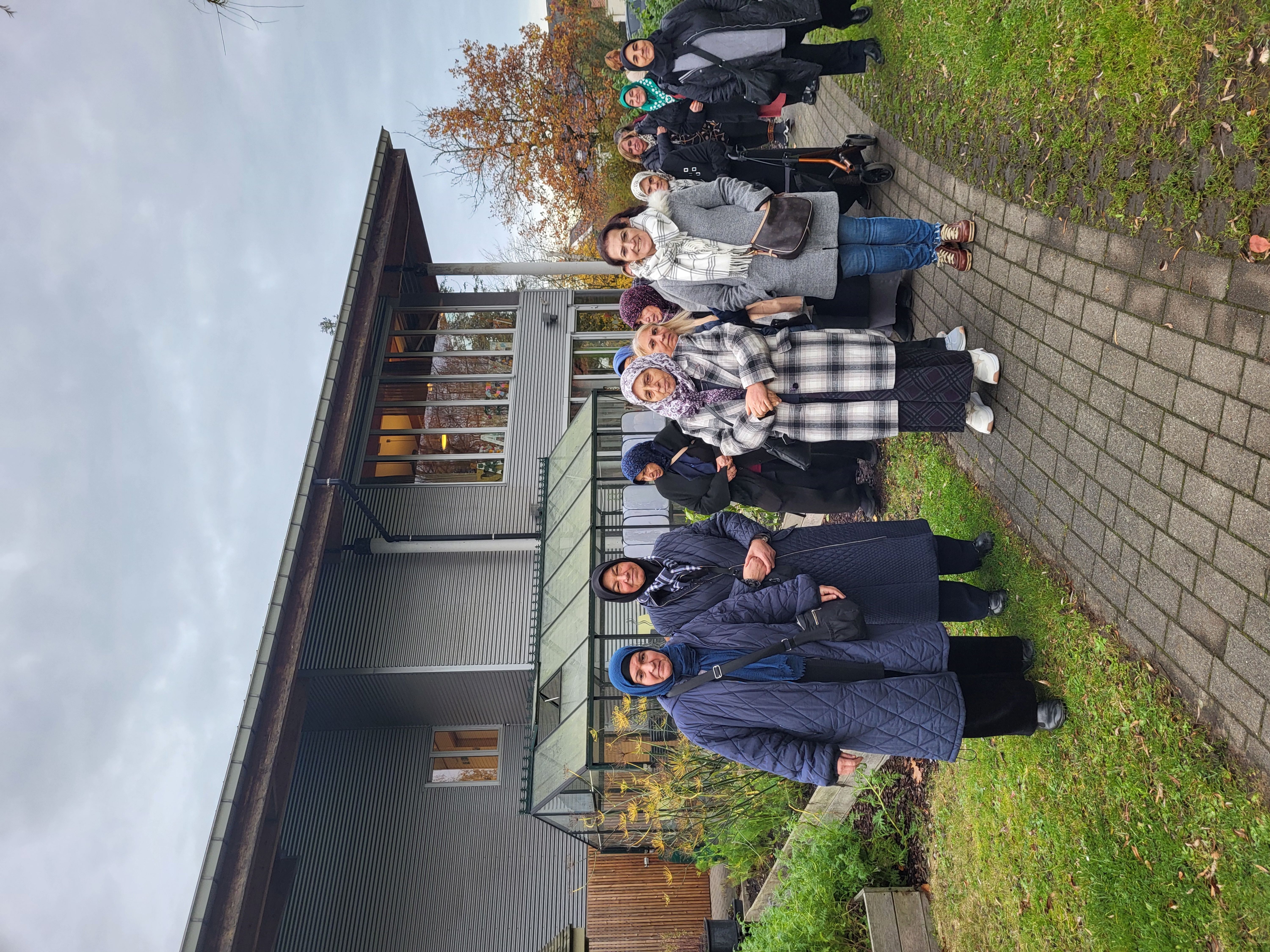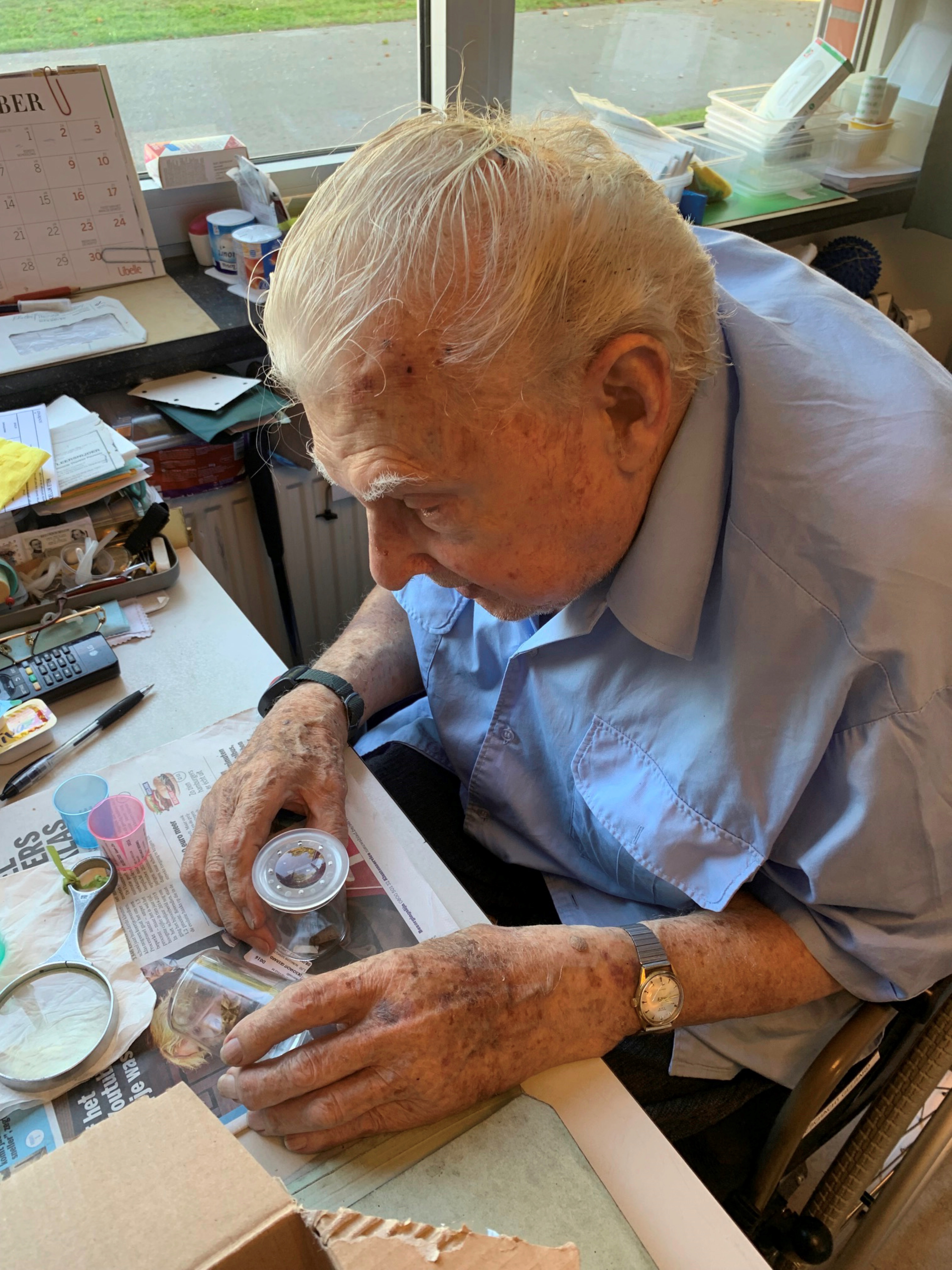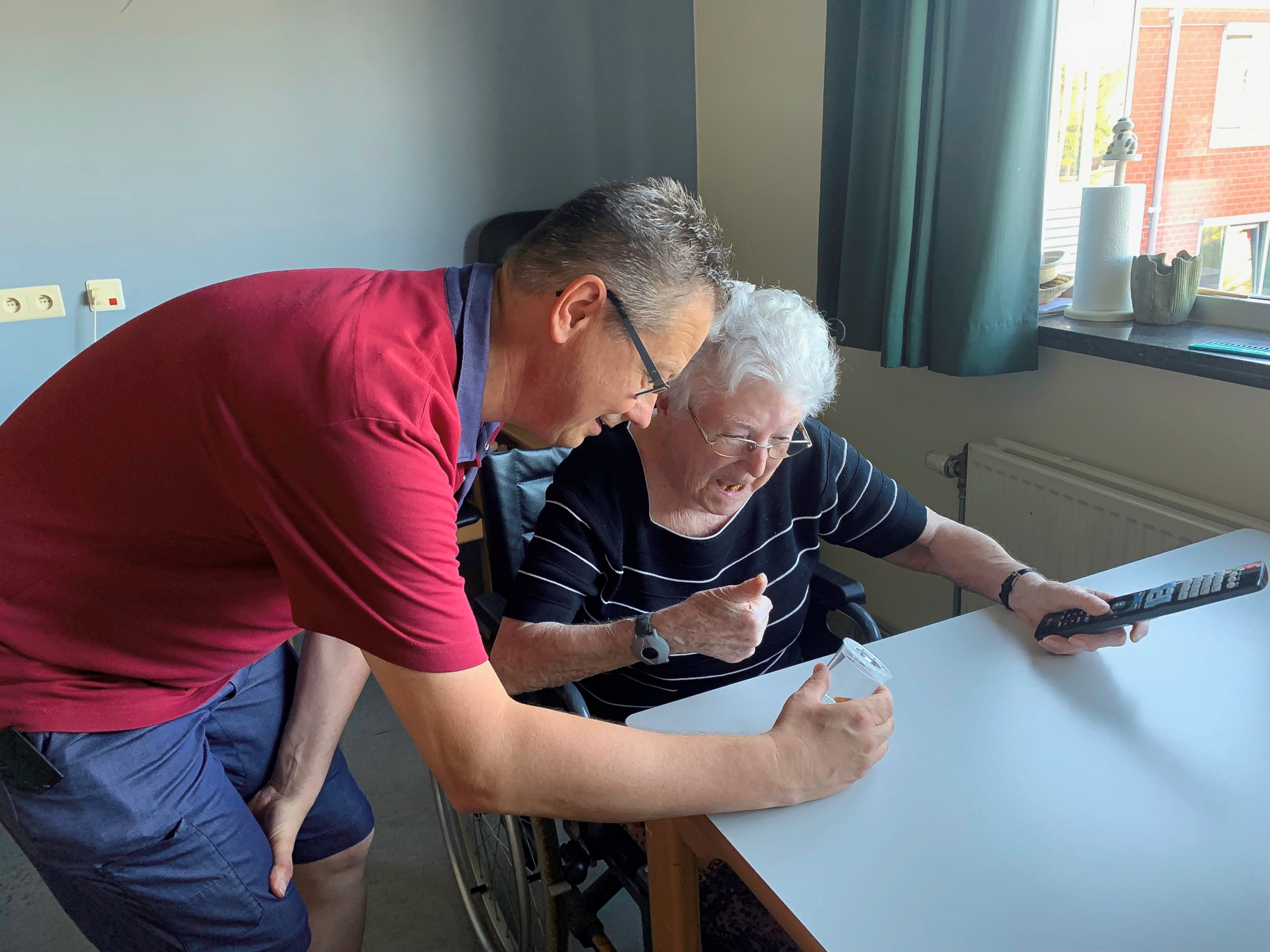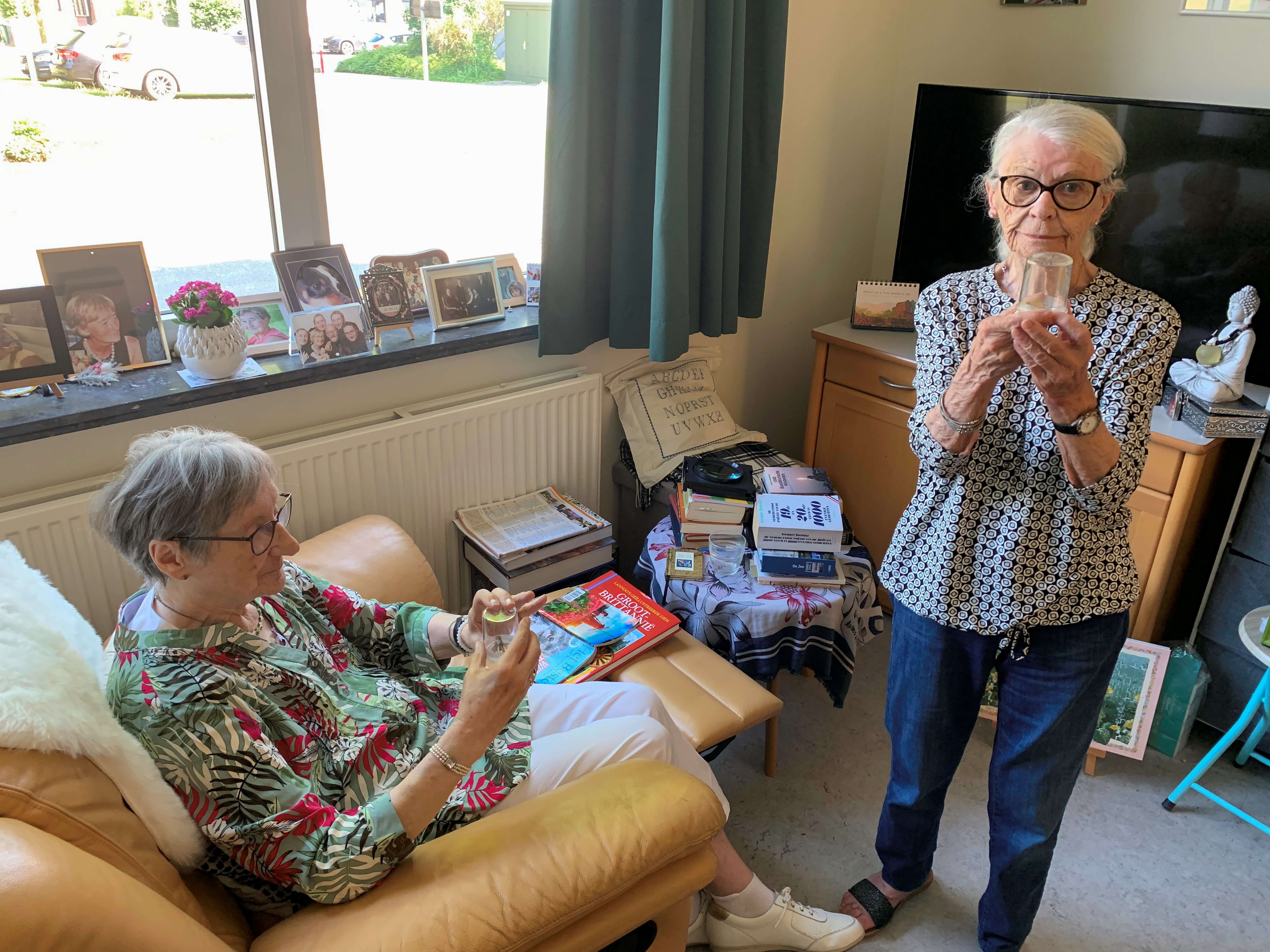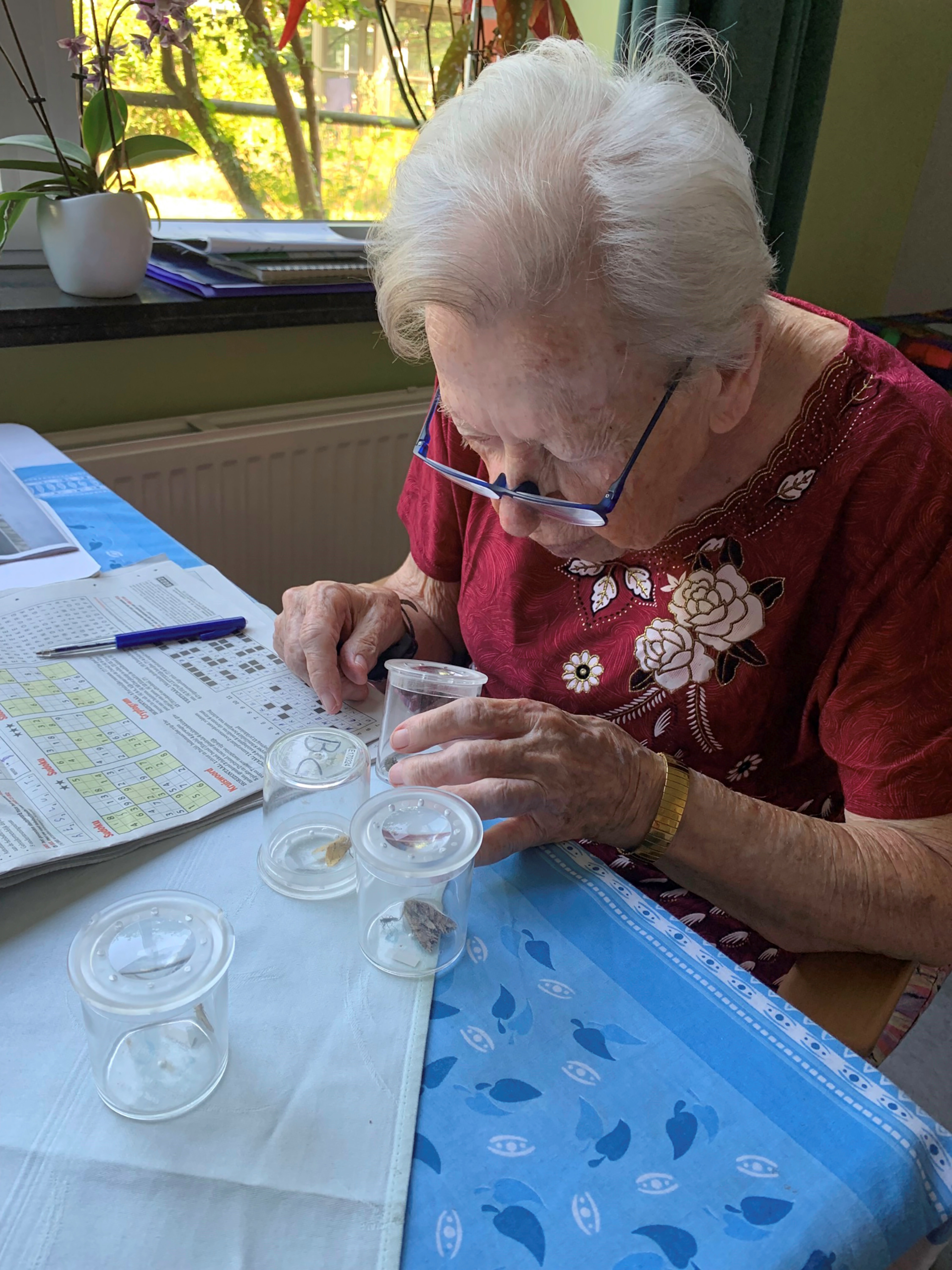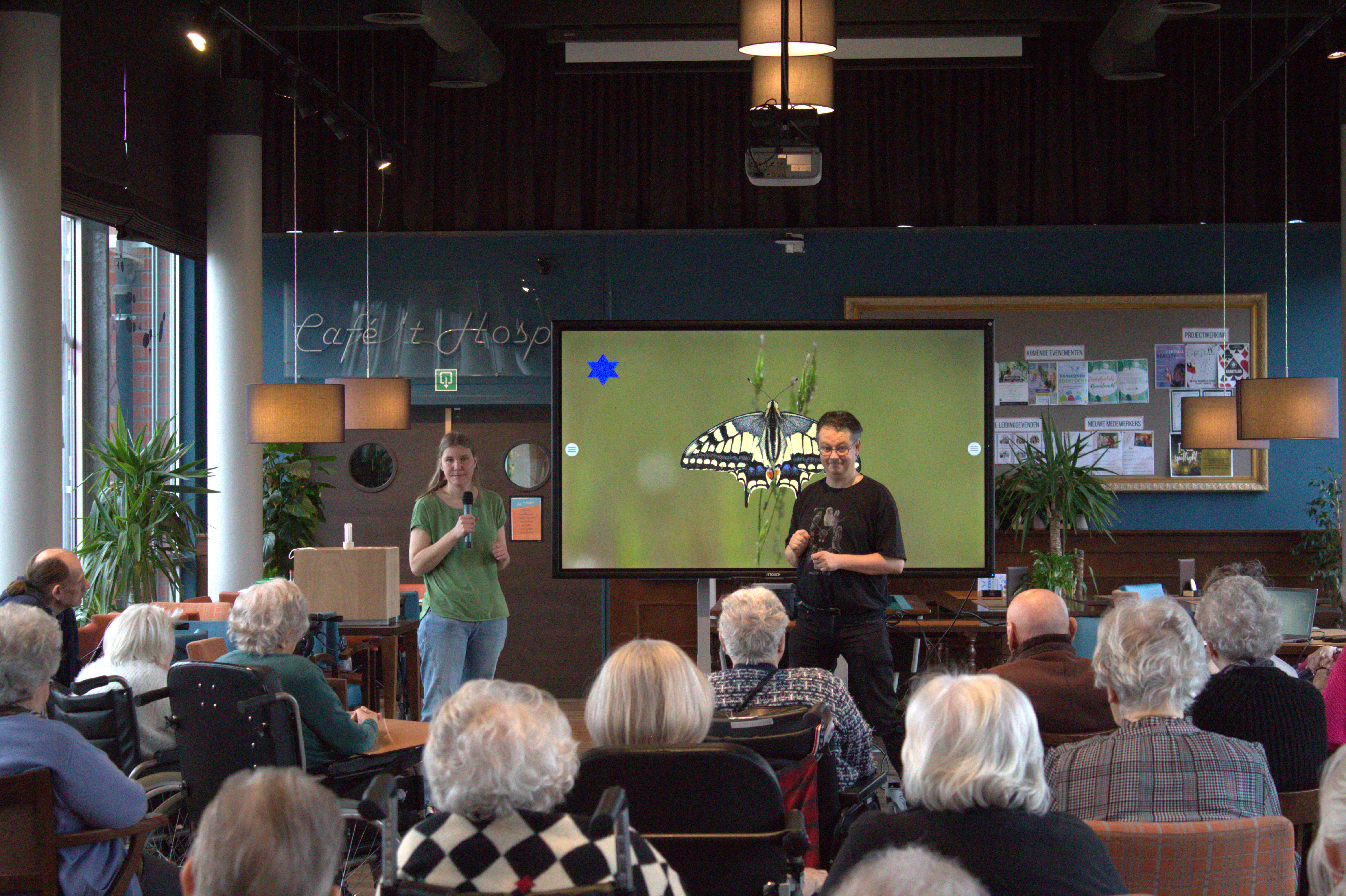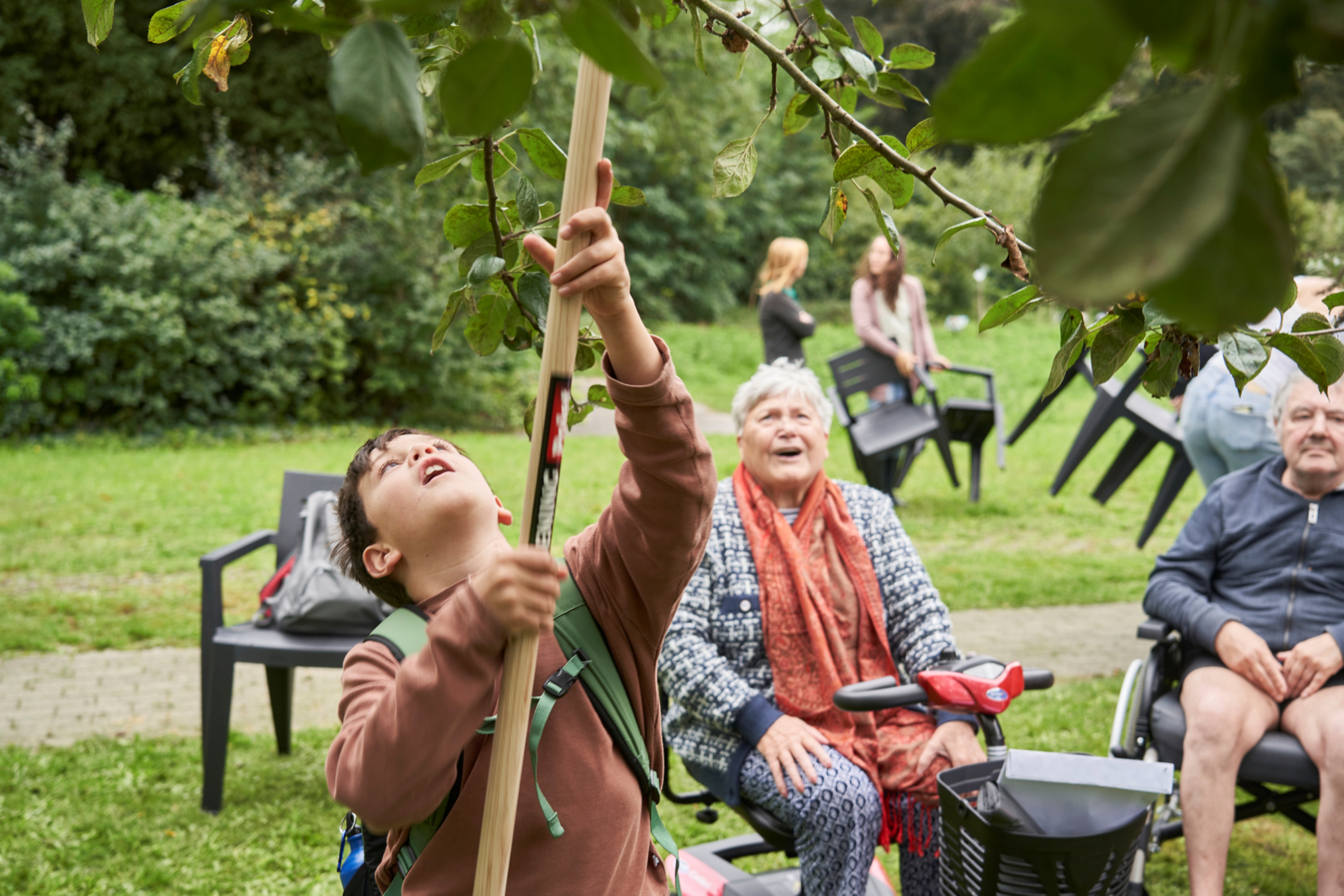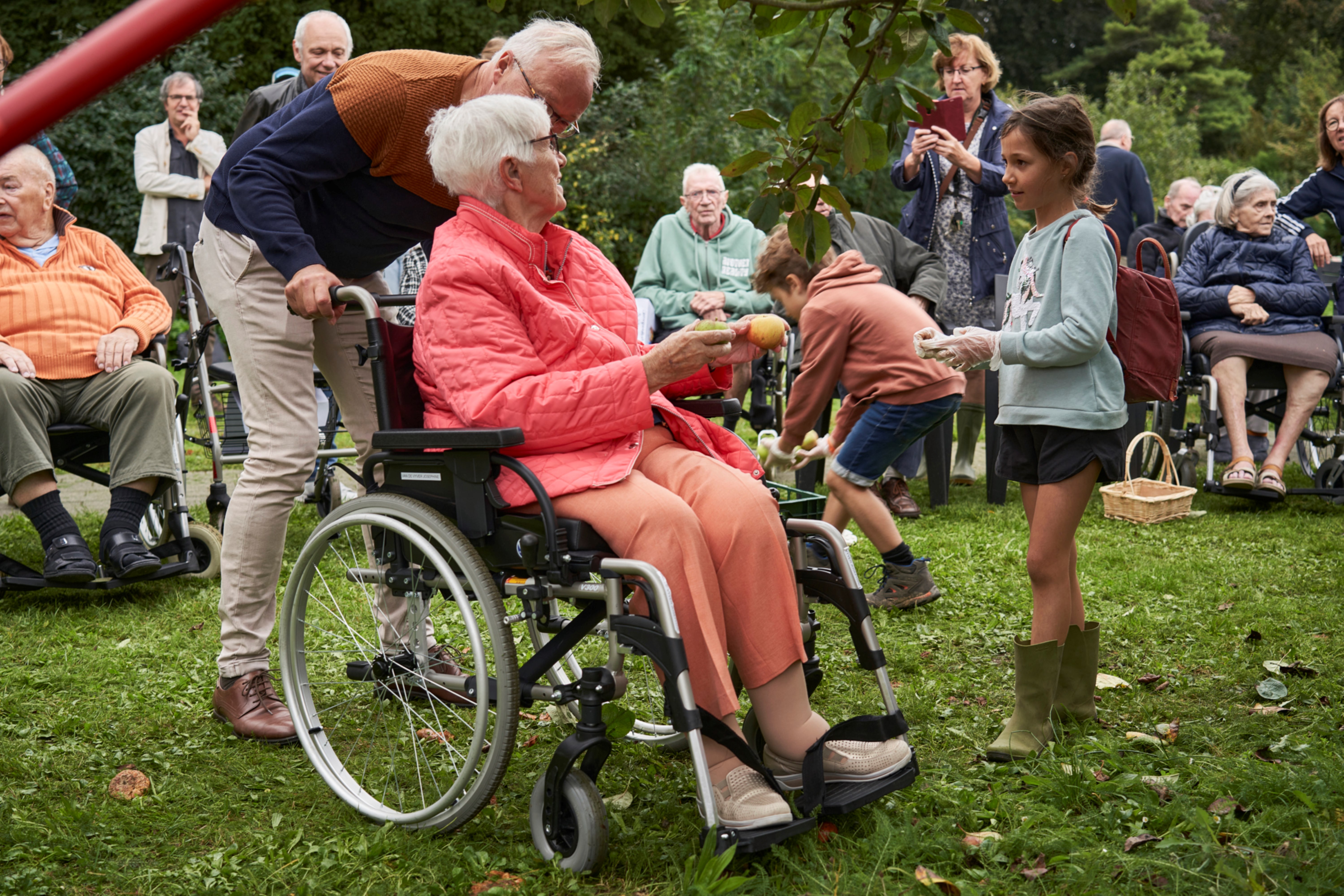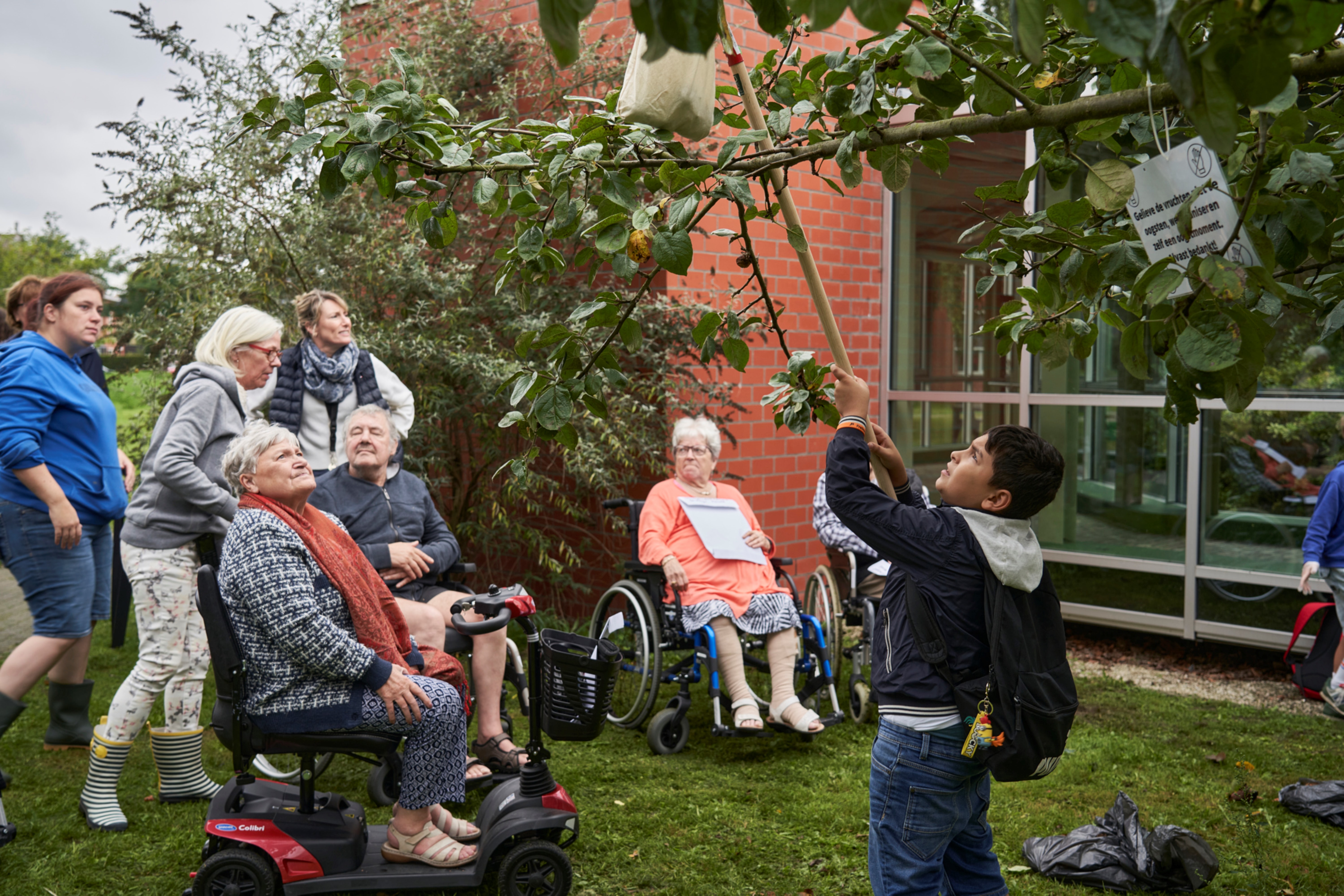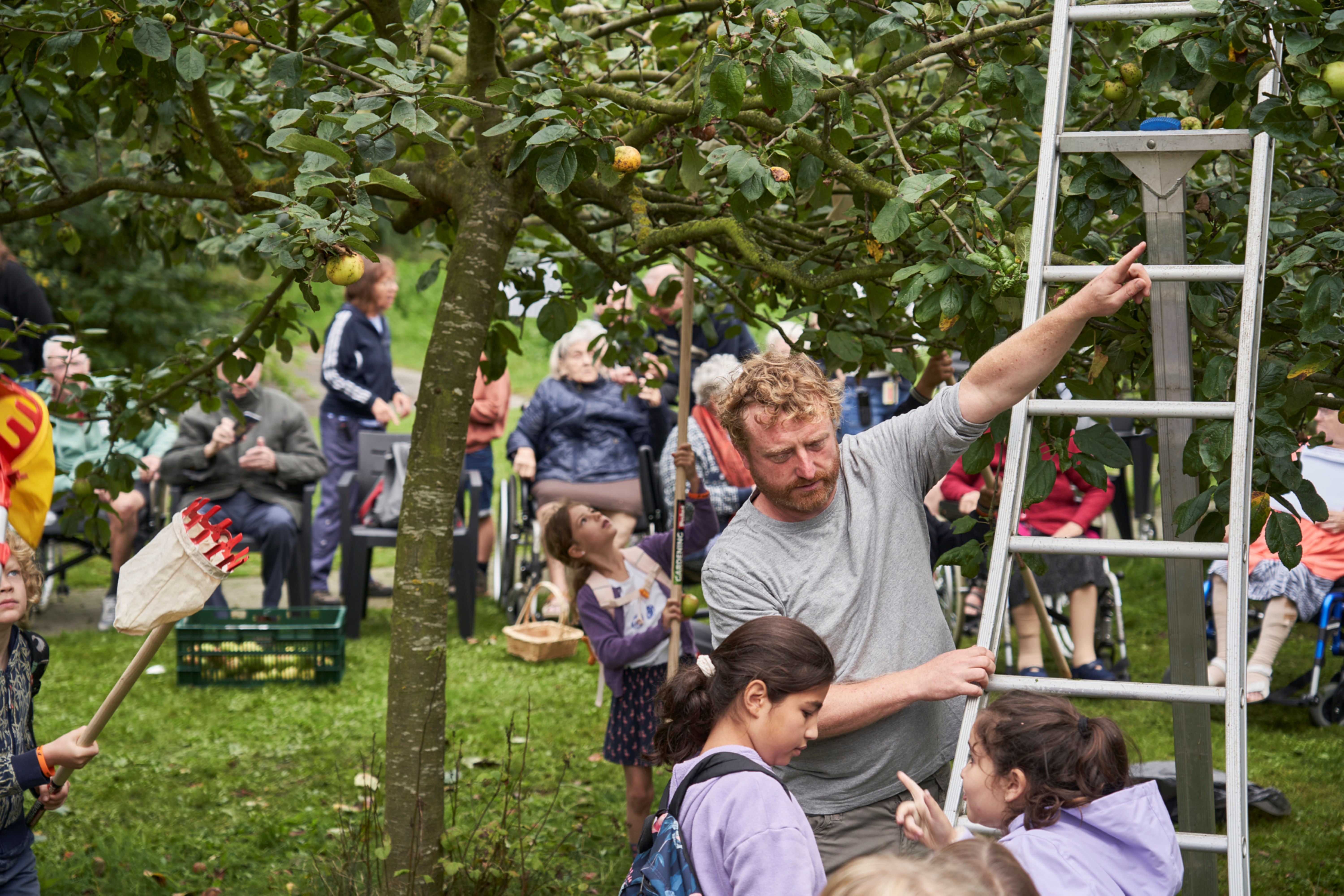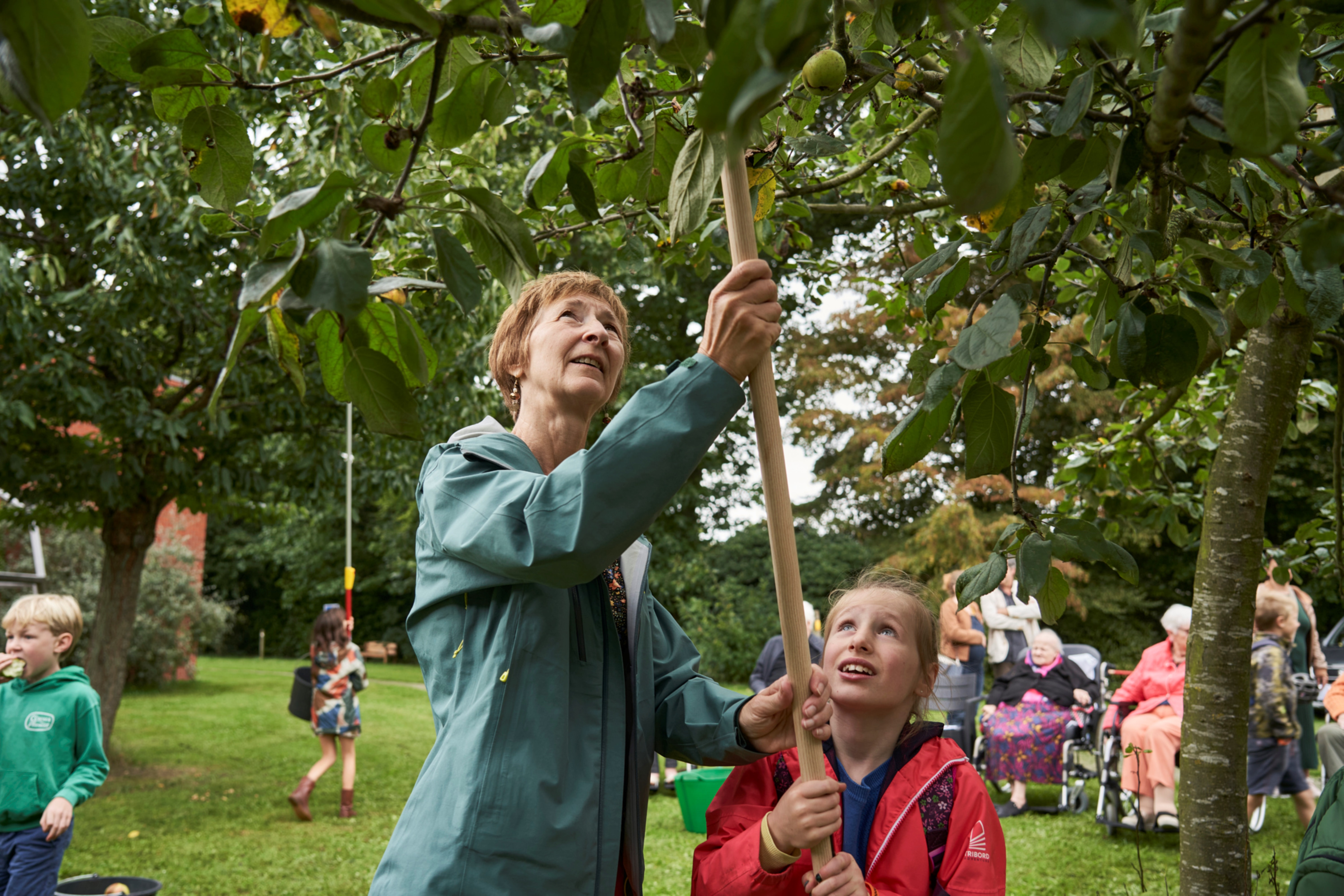Reconnecting with nature
Green Elderly Care, nature & well-being
Enhancing elderly care with nature-based activities, awareness & education in a green community.
Green Elderly Care enhances quality of life for long-term care residents through nature-based activities, biodiversity, and community ties. We transform elderly care with green spaces like gardens, orchards, and animal enclosures, while fostering intergenerational connections with schools and the local community. Through hands-on environmental education and sustainable practices, we create an inclusive, dynamic environment that promotes well-being and lifelong learning.
Belgium
Local
Ghent
It addresses urban-rural linkages
It refers to other types of transformations (soft investment)
Yes
2024-12-31
No
No
No
As an individual
The mission of Green Elderly Care is to enhance the quality of life for long-term care residents by creating a green, biodiverse environment that fosters social interaction, participation, and belonging. Scientific research confirms that meaningful nature-based activities, biodiversity, and strong community ties all contribute to well-being.
Our project is inclusive and participatory, ensuring all residents – regardless of physical, psychological, or social needs – benefit. Active involvement of residents, families, and staff strengthens autonomy and decision-making.
Core elements:
- Biodiverse garden: what began as a small vegetable garden patch has grown into a greenhouse, orchard, flower meadows, chicken run, insect hotel, and beehives. These physical structures are not just aesthetic additions, they create a living environment that embeds sustainability into daily life, fostering continuous interaction with nature and ecological awareness as a core element of elderly care.
- Intergenerational collaboration: schoolchildren, university students, and community members engage in gardening, animal care and nature education.
- Strong neighbourhood ties: the facility functions as an open community hub, where neighbours join sustainability initiatives.
- Sustainability education: residents, families, and schools learn about biodiversity, conservation, and climate-friendly practices through activities like bird counting, butterfly observation and wildlife support.
Beyond improving quality of life, the project reshapes the perception of elderly care, attracting young professionals and fostering intergenerational exchange. As a model for innovative elderly care, Green Elderly Care shows that nature-based solutions enhance well-being while fostering sustainability and community engagement.
By integrating nature, education, and inclusion, we transform long-term care into a vibrant, meaningful experience for residents, their families, and the broader community.
Our project is inclusive and participatory, ensuring all residents – regardless of physical, psychological, or social needs – benefit. Active involvement of residents, families, and staff strengthens autonomy and decision-making.
Core elements:
- Biodiverse garden: what began as a small vegetable garden patch has grown into a greenhouse, orchard, flower meadows, chicken run, insect hotel, and beehives. These physical structures are not just aesthetic additions, they create a living environment that embeds sustainability into daily life, fostering continuous interaction with nature and ecological awareness as a core element of elderly care.
- Intergenerational collaboration: schoolchildren, university students, and community members engage in gardening, animal care and nature education.
- Strong neighbourhood ties: the facility functions as an open community hub, where neighbours join sustainability initiatives.
- Sustainability education: residents, families, and schools learn about biodiversity, conservation, and climate-friendly practices through activities like bird counting, butterfly observation and wildlife support.
Beyond improving quality of life, the project reshapes the perception of elderly care, attracting young professionals and fostering intergenerational exchange. As a model for innovative elderly care, Green Elderly Care shows that nature-based solutions enhance well-being while fostering sustainability and community engagement.
By integrating nature, education, and inclusion, we transform long-term care into a vibrant, meaningful experience for residents, their families, and the broader community.
Nature-based well-being
Sustainability and biodiversity
Community engagement
Intergenerational connection
Inclusive elderly care
Green Elderly Care integrates environmental sustainability into long-term care by transforming traditional green spaces into biodiverse, nature-rich environments that enhance both ecological and human well-being. While most elderly care facilities maintain decorative lawns with limited ecological value, our project actively promotes biodiversity, nature-based activities, and ecological awareness.
We have replaced conventional green spaces with flower meadows, orchards, and pollinator-friendly plants, supporting local wildlife and enriching the environment. Our approach encourages biodiversity by attracting bees, butterflies birds, wildlife, and creates a balanced ecosystem where nature and care co-exist. By working with local schools, universities and conservation experts, we ensure that the facility remains a living educational environment, where residents, students and staff learn about the importance of biodiversity and sustainable land management.
The project fosters sustainability awareness through hands-on activities, such as observing and documenting insects, butterflies, and birds, creating nesting boxes, camera’s in nesting boxes, and shelters for local species, and learning about the role of plants and animals in the ecosystem. Residents, staff, and young visitors actively participate in environmental education, transforming the facility into an open space for ecological learning and interaction.
Green Elderly Care demonstrates that long-term care facilities can be part of the solution to biodiversity loss and environmental degradation. By integrating nature-based solutions, we offer a replicable model that enhances both the natural environment and resident’s quality of life proving that elderly care can go hand in hand in ecological responsibility.
We have replaced conventional green spaces with flower meadows, orchards, and pollinator-friendly plants, supporting local wildlife and enriching the environment. Our approach encourages biodiversity by attracting bees, butterflies birds, wildlife, and creates a balanced ecosystem where nature and care co-exist. By working with local schools, universities and conservation experts, we ensure that the facility remains a living educational environment, where residents, students and staff learn about the importance of biodiversity and sustainable land management.
The project fosters sustainability awareness through hands-on activities, such as observing and documenting insects, butterflies, and birds, creating nesting boxes, camera’s in nesting boxes, and shelters for local species, and learning about the role of plants and animals in the ecosystem. Residents, staff, and young visitors actively participate in environmental education, transforming the facility into an open space for ecological learning and interaction.
Green Elderly Care demonstrates that long-term care facilities can be part of the solution to biodiversity loss and environmental degradation. By integrating nature-based solutions, we offer a replicable model that enhances both the natural environment and resident’s quality of life proving that elderly care can go hand in hand in ecological responsibility.
Green Elderly Care enhances the aesthetic and sensory experience of long-term care by integrating nature into daily life, transforming the care facility into a meaningful living environment. Instead of sterile, institutional spaces, we create a harmonious setting that stimulates the senses, fosters emotional well-being, and strengthens cultural connections.
The design of outdoor spaces prioritizes natural beauty, biodiversity, and a sense of place. Traditional lawns and a monotonous landscape have been replaced with flower meadows, fruit trees, and diverse plants, ensuring that every season offers changing colours, scents, and textures. The presence of animals, such as chickens and a mini-pig, adds to the multisensory experience, creating a dynamic and engaging environment that evokes a sense of calm, curiosity, and connection to nature.
A key focus is creating spaces that encourage interaction and increase the opportunities for residents to engage with nature, whether actively through gardening and observation or passively through rest and reflection. The layout fosters social encounters and intergenerational exchanges, strengthening the cultural fabric of the community and the broader neighbourhood. By engaging schoolchildren, college and university students and neighbors, the project incorporates meaningful educational activities, reinforcing the residents’ mobility, autonomy, self-determination as well as a sense of belonging.
Green Elderly Care serves an exemplary model of how long-term care facilities can integrate aesthetics, culture and nature to improve the quality of life. By transforming the environment into an engaging and beautiful space, the project demonstrates that elderly care can be both emotionally enriching and connected to the surrounding community.
The design of outdoor spaces prioritizes natural beauty, biodiversity, and a sense of place. Traditional lawns and a monotonous landscape have been replaced with flower meadows, fruit trees, and diverse plants, ensuring that every season offers changing colours, scents, and textures. The presence of animals, such as chickens and a mini-pig, adds to the multisensory experience, creating a dynamic and engaging environment that evokes a sense of calm, curiosity, and connection to nature.
A key focus is creating spaces that encourage interaction and increase the opportunities for residents to engage with nature, whether actively through gardening and observation or passively through rest and reflection. The layout fosters social encounters and intergenerational exchanges, strengthening the cultural fabric of the community and the broader neighbourhood. By engaging schoolchildren, college and university students and neighbors, the project incorporates meaningful educational activities, reinforcing the residents’ mobility, autonomy, self-determination as well as a sense of belonging.
Green Elderly Care serves an exemplary model of how long-term care facilities can integrate aesthetics, culture and nature to improve the quality of life. By transforming the environment into an engaging and beautiful space, the project demonstrates that elderly care can be both emotionally enriching and connected to the surrounding community.
Our project is based on the belief that an inclusive society values every individual, regardless of age, background or ability, and provides opportunities for everyone to contribute. We aim to create a sense of belonging, where differences are celebrated and resources are accessible to all.
Focusing on elderly care individuals, often marginalized in long-term care facilities, the Green Care Project works to reintegrate them into society, showing that they still have an important role to play. The project invites people from all backgrounds – neighbourhood residents, schools, universities and diverse cultures – to participate in activities like gardening, animal care and environmental education.
In doing so, we promote intergenerational exchange, connecting the elderly with younger generations. We foster mutual learning, strengthen social bonds and bridge the gap between age groups.
By opening the green space to the broader neighbourhood we tackle spatial segregation and create a shared, welcoming space that encourages interaction among diverse groups. The project is designed to be accessible and affordable, offering opportunities for people of all ages, and socio-economic backgrounds to engage.
A core element of the project is positive framing. By involving young people, we aim to reshape their view of the care sector, showing that working in care is meaningful, exiting, and offers real opportunities. This challenges the perception of care work as merely “difficult” or “unappealing”, presenting instead as a purposeful career that makes a difference.
Through these efforts, the Green Care Project reduces isolation and segregation, demonstrating how shared spaces and collective activities can foster social cohesion, support vulnerable members of society, and promote an inclusive future.
Focusing on elderly care individuals, often marginalized in long-term care facilities, the Green Care Project works to reintegrate them into society, showing that they still have an important role to play. The project invites people from all backgrounds – neighbourhood residents, schools, universities and diverse cultures – to participate in activities like gardening, animal care and environmental education.
In doing so, we promote intergenerational exchange, connecting the elderly with younger generations. We foster mutual learning, strengthen social bonds and bridge the gap between age groups.
By opening the green space to the broader neighbourhood we tackle spatial segregation and create a shared, welcoming space that encourages interaction among diverse groups. The project is designed to be accessible and affordable, offering opportunities for people of all ages, and socio-economic backgrounds to engage.
A core element of the project is positive framing. By involving young people, we aim to reshape their view of the care sector, showing that working in care is meaningful, exiting, and offers real opportunities. This challenges the perception of care work as merely “difficult” or “unappealing”, presenting instead as a purposeful career that makes a difference.
Through these efforts, the Green Care Project reduces isolation and segregation, demonstrating how shared spaces and collective activities can foster social cohesion, support vulnerable members of society, and promote an inclusive future.
The project offers an opportunity for community engagement and education through organizing educational programs and outreach efforts aimed at raising awareness about environmental responsibility, sustainability and the benefits of green initiatives. By involving residents, their families, staff and the wider community, the care facility fosters a sense of shared commitment to a greener future.
Our long-term care facility is a part of the community. We participate in neigbourhood activities and invite the neighbours to activities held in the care facility.
The community’s involvement is also shown in consulting with neighbours when decisions are made. To further encourage participation one of the future goals of the Green Care Project is the establishment of a “green community centre”, a separate meeting place near the green area, distinct from the care facility – this space will cater for residents, schoolchildren, neighbours for green-related activities.
The input of the community is key-element of the project
Our long-term care facility is a part of the community. We participate in neigbourhood activities and invite the neighbours to activities held in the care facility.
The community’s involvement is also shown in consulting with neighbours when decisions are made. To further encourage participation one of the future goals of the Green Care Project is the establishment of a “green community centre”, a separate meeting place near the green area, distinct from the care facility – this space will cater for residents, schoolchildren, neighbours for green-related activities.
The input of the community is key-element of the project
The main stakeholders in the green care project are the residents of the long-term care facility (LTCF). The development of the project, from a small vegetable garden to its current form and future evolution, has been discussed and shaped with the input from residents and staff.
In order to secure the necessary funding for the project, additional stakeholders were engaged, including the director and management team, the local city council, and various administrative and service departments. The neighbourhood and the wider community were also consulted as key stakeholders. Furthermore, the regional (Flemish government), which oversees the quality of care was also involved in the project.
The added value of each stakeholder’s engagement has been crucial in supporting and financing the Green Care Project. Publications about the project in local, regional and national media have reinforced our mission to innovate and improve the quality of life for the residents in our care facility. This engagement at various levels both horizontally with peers and vertically with authorities, has strengthened the projects’ impact and connection to similar goals across different sectors
In order to secure the necessary funding for the project, additional stakeholders were engaged, including the director and management team, the local city council, and various administrative and service departments. The neighbourhood and the wider community were also consulted as key stakeholders. Furthermore, the regional (Flemish government), which oversees the quality of care was also involved in the project.
The added value of each stakeholder’s engagement has been crucial in supporting and financing the Green Care Project. Publications about the project in local, regional and national media have reinforced our mission to innovate and improve the quality of life for the residents in our care facility. This engagement at various levels both horizontally with peers and vertically with authorities, has strengthened the projects’ impact and connection to similar goals across different sectors
Green Elderly Care integrates several disciplines to create a holistic, sustainable environment for elderly care. Key areas include gerontology, environmental science, landscape architecture, education, social work, and healthcare management.
Gerontology informs the understanding of the elderly's physical, psychological, and social needs. Elderly care has shifted from hospital-like settings to a more comprehensive approach, focusing on autonomy, participation, and well-being, as seen in the concept of Active Ageing (WHO).
Environmental science supports our biodiversity goals and emphasizes nature-based recreation's positive impact on elderly health. Studies show that daily interaction with green spaces boosts mental and physical well-being, reduces stress, and encourages social connection.
Landscape architecture contributes to the design of our gardens, orchards, and animal enclosures, ensuring accessibility, sensory stimulation, and ecological balance. These spaces are intentionally crafted to promote physical activity, which can reduce medication use and strengthen mobility, heart, and lung function.
Educational sciences promote lifelong learning through nature-based programs, fostering intergenerational connections and enhancing a sense of belonging.
Social work focuses on inclusion and building community ties, addressing isolation in long-term care settings.
Finally, healthcare management ensures the integration of nature-based care into daily routines, aligning with health standards and promoting well-being beyond traditional medical care.
These fields collaborate through a co-creation approach, engaging residents, staff, families, and local organisations.
Scientific research monitors the project’s impact on quality of life, supporting evidence-based adoption of nature-based elderly care models. This interdisciplinary approach creates a sustainable, replicable care model that enhances ecological and human well-being through community involvement.
Gerontology informs the understanding of the elderly's physical, psychological, and social needs. Elderly care has shifted from hospital-like settings to a more comprehensive approach, focusing on autonomy, participation, and well-being, as seen in the concept of Active Ageing (WHO).
Environmental science supports our biodiversity goals and emphasizes nature-based recreation's positive impact on elderly health. Studies show that daily interaction with green spaces boosts mental and physical well-being, reduces stress, and encourages social connection.
Landscape architecture contributes to the design of our gardens, orchards, and animal enclosures, ensuring accessibility, sensory stimulation, and ecological balance. These spaces are intentionally crafted to promote physical activity, which can reduce medication use and strengthen mobility, heart, and lung function.
Educational sciences promote lifelong learning through nature-based programs, fostering intergenerational connections and enhancing a sense of belonging.
Social work focuses on inclusion and building community ties, addressing isolation in long-term care settings.
Finally, healthcare management ensures the integration of nature-based care into daily routines, aligning with health standards and promoting well-being beyond traditional medical care.
These fields collaborate through a co-creation approach, engaging residents, staff, families, and local organisations.
Scientific research monitors the project’s impact on quality of life, supporting evidence-based adoption of nature-based elderly care models. This interdisciplinary approach creates a sustainable, replicable care model that enhances ecological and human well-being through community involvement.
Nature and animal-based activities are not new to long-term care facilities. More and more facilities recognize the positive impact of a green environment or animals on residents.
Our project is unique by not only using nature to improve quality of life but also raising awareness about its importance and what nature needs from us.
A key innovation is its focus on lifelong learning. We believe a person is never too old to learn, with nature education being vital for both young and old.
While many care facilities have gardens or animals (such as birds, aquariums, cats, dogs, etc…), our project’s originality lies in incorporating nature as an integral part of our mission. Simply having animals and green spaces already improves quality of life, but what sets our project apart is that we use them for meaningful activities. These include nature awareness programs and fostering collaboration between generations through nature education.
Despite the care that the elderly in long-term care need, our project promotes active ageing and social participation, highlighting the positive impact that the elderly still have. It is precisely that participation, that contribution and that meaningful interpretation that enhances their quality of life.
Our butterfly project is a prime example of this. Not only do our residents become experts in butterflies (education), they also participate in hands-on activities such as making caterpillar and butterfly boxes (hands and coordination exercises). Additionally, they contribute to nature conservation activities by releasing vulnerable butterfly species back into nature.
Our Green Care Project has been recognized with several awards, including the Health and Care Award in Flanders, Long Term Care Facility of the year 2022 and 2024 (Zorgmagazine), and the Award for Best facility in Europe (European Association for the Homes and Services for the Ageing – EAHSA) in 2016.
Our project is unique by not only using nature to improve quality of life but also raising awareness about its importance and what nature needs from us.
A key innovation is its focus on lifelong learning. We believe a person is never too old to learn, with nature education being vital for both young and old.
While many care facilities have gardens or animals (such as birds, aquariums, cats, dogs, etc…), our project’s originality lies in incorporating nature as an integral part of our mission. Simply having animals and green spaces already improves quality of life, but what sets our project apart is that we use them for meaningful activities. These include nature awareness programs and fostering collaboration between generations through nature education.
Despite the care that the elderly in long-term care need, our project promotes active ageing and social participation, highlighting the positive impact that the elderly still have. It is precisely that participation, that contribution and that meaningful interpretation that enhances their quality of life.
Our butterfly project is a prime example of this. Not only do our residents become experts in butterflies (education), they also participate in hands-on activities such as making caterpillar and butterfly boxes (hands and coordination exercises). Additionally, they contribute to nature conservation activities by releasing vulnerable butterfly species back into nature.
Our Green Care Project has been recognized with several awards, including the Health and Care Award in Flanders, Long Term Care Facility of the year 2022 and 2024 (Zorgmagazine), and the Award for Best facility in Europe (European Association for the Homes and Services for the Ageing – EAHSA) in 2016.
The methodology we usually use when decisions have to be made is co-creation. – When a resident or staff member has an idea, it is discussed in group sessions or focus groups (residents and staff). Green care has grown from the gardening talents of both staff and residents. The original concept was : “you don’t stop gardening when you get old, you get old when you stop gardening”. The idea has evolved over time.
- Scientific and other literature was reviewed by the management team to inform the decision-making process.
- The Facility management Department, alongside the Green services of the City of Ghent were consulted to realize the idea. The City Council of Ghent has approved the financial support for the project
- A group of specialists (including building and landscape architects, and construction experts) was formed. The initial plans for the green community centre were drawn up, with the next step being, obtaining permits and presenting the plans. The building will be constructed using sustainable materials.
- The Social Employment Service of the City of Ghent created the animal enclosure (for the mini pig) and the chicken run. We will engage them in creating a goat enclosure and stable in the near future..
- Every step of the process is shared with the residents, staff and neighbours to ensure transparency and participation.
- Nature organizations, colleges, the university of Ghent and skilled staff members are involved in nature-education initiatives, such as the moth project (catching moths in a light box and register the species), the butterfly project (watching caterpillars become butterflies), bird watching and counting, animal training, keeping bees and producing honey, growing vegetables and herbs, …).
- Periodic work meetings with the group of specialists and the focus group of residents to evaluate the process through the plan-do-check-act methodology.
- Scientific and other literature was reviewed by the management team to inform the decision-making process.
- The Facility management Department, alongside the Green services of the City of Ghent were consulted to realize the idea. The City Council of Ghent has approved the financial support for the project
- A group of specialists (including building and landscape architects, and construction experts) was formed. The initial plans for the green community centre were drawn up, with the next step being, obtaining permits and presenting the plans. The building will be constructed using sustainable materials.
- The Social Employment Service of the City of Ghent created the animal enclosure (for the mini pig) and the chicken run. We will engage them in creating a goat enclosure and stable in the near future..
- Every step of the process is shared with the residents, staff and neighbours to ensure transparency and participation.
- Nature organizations, colleges, the university of Ghent and skilled staff members are involved in nature-education initiatives, such as the moth project (catching moths in a light box and register the species), the butterfly project (watching caterpillars become butterflies), bird watching and counting, animal training, keeping bees and producing honey, growing vegetables and herbs, …).
- Periodic work meetings with the group of specialists and the focus group of residents to evaluate the process through the plan-do-check-act methodology.
The Green Care Project has demonstrated its potential for replication in various care settings and communities. Long-term care facilities in Belgium and beyond have already shown interest in the project, with some incorporating elements such as green activities and animal care into their own facilities.
Our project’s foundation is rooted in Maslow’s hierarchy of needs, focusing on fulfilling higher level need such as self-esteem and self-actualization through nature-based activities. While basic green spaces and animal interactions are already common in many long-term care facilities, our approach is unique in how it integrates nature into the overall mission of the facility and fosters intergenerational and cultural interactions.
What makes this project easily transferable is the methodology of co-creation between staff, residents, and the local community. This approach, which has proven to be successful in our own facility, can be adapted and scaled to other care environments, regardless of location. We believe that the project’s core principles of community involvement, education, and nature awareness can be implemented in other settings, from urban centres to rural areas.
Challenges, such as securing funding or adapting the concept to different cultural contexts, can be addressed by providing guidance and resources to new implementing facilities. For example, a toolkit or training program could be created for staff in other long-term care facilities, helping them replicate the project’s successes.
Furthermore, the Green Care Project’s impact extends beyond the residents—it strengthens the connection between long-term care facilities and the wider community, providing a model for cross-generational and cross-cultural engagement. Our project has inspired similar initiatives in other countries, including Canada, Japan, and Finland, and we continue to receive visits from organizations worldwide seeking to implement similar initiatives.
Our project’s foundation is rooted in Maslow’s hierarchy of needs, focusing on fulfilling higher level need such as self-esteem and self-actualization through nature-based activities. While basic green spaces and animal interactions are already common in many long-term care facilities, our approach is unique in how it integrates nature into the overall mission of the facility and fosters intergenerational and cultural interactions.
What makes this project easily transferable is the methodology of co-creation between staff, residents, and the local community. This approach, which has proven to be successful in our own facility, can be adapted and scaled to other care environments, regardless of location. We believe that the project’s core principles of community involvement, education, and nature awareness can be implemented in other settings, from urban centres to rural areas.
Challenges, such as securing funding or adapting the concept to different cultural contexts, can be addressed by providing guidance and resources to new implementing facilities. For example, a toolkit or training program could be created for staff in other long-term care facilities, helping them replicate the project’s successes.
Furthermore, the Green Care Project’s impact extends beyond the residents—it strengthens the connection between long-term care facilities and the wider community, providing a model for cross-generational and cross-cultural engagement. Our project has inspired similar initiatives in other countries, including Canada, Japan, and Finland, and we continue to receive visits from organizations worldwide seeking to implement similar initiatives.
The connection between 'elderly care' and 'nature' has gained significant attention globally. While existing research shows a strong correlation between nature-based activities and improved quality of life in long-term care facilities, further studies are needed to explore the impact of nature education on well-being in this context.
Key global challenges in elderly care include underfunding, staff shortages, and a lack of understanding regarding the preferences and needs of elderly residents. These issues hinder the implementation of innovative approaches like 'Green Care'. Without sufficient funding, there is a risk that elderly care will regress to outdated models focused solely on physical and hygienic care.
The main challenge for our project is to demonstrate that co-creation initiatives, driven by passion and commitment, can significantly enhance the quality of life for elderly residents through the use of nature. Local solutions in the city of Ghent have shown that creativity and innovation in care are valued and supported, providing a replicable model for other regions.
This project addresses not only local needs but also global challenges. By integrating nature-based solutions, we contribute to broader global goals, including the United Nations Sustainable Development Goals (SDGs) on good health and well-being (SDG 3), sustainable cities and communities (SDG 11), and life on land (SDG 15). The project has the potential to inspire similar initiatives worldwide, creating a sustainable, intergenerational model that fosters both environmental awareness and social cohesion.
Key global challenges in elderly care include underfunding, staff shortages, and a lack of understanding regarding the preferences and needs of elderly residents. These issues hinder the implementation of innovative approaches like 'Green Care'. Without sufficient funding, there is a risk that elderly care will regress to outdated models focused solely on physical and hygienic care.
The main challenge for our project is to demonstrate that co-creation initiatives, driven by passion and commitment, can significantly enhance the quality of life for elderly residents through the use of nature. Local solutions in the city of Ghent have shown that creativity and innovation in care are valued and supported, providing a replicable model for other regions.
This project addresses not only local needs but also global challenges. By integrating nature-based solutions, we contribute to broader global goals, including the United Nations Sustainable Development Goals (SDGs) on good health and well-being (SDG 3), sustainable cities and communities (SDG 11), and life on land (SDG 15). The project has the potential to inspire similar initiatives worldwide, creating a sustainable, intergenerational model that fosters both environmental awareness and social cohesion.
The increasing participation of residents in the Green Care project shows their growing interest in nature, social interactions, and community engagement, including with young people. Nature has become a common ground for communication, fostering deeper connections.
The neighbourhood, local schools, and universities collaborate actively with our residents, through visits and exchanges. This cross-generational exchange strengthens relationships and social cohesion. For example, x% of residents participated in community activities, and xx local students engaged through educational programs.
The impact of the Green Care project has grown, with increasing community participation and intercultural events around gardening and nature. The City Council of Ghent, management, families, and the government value our efforts to improve residents' quality of life by integrating nature into care. Residents’ feedback and research confirm improvements in well-being and satisfaction.
Illustrative are the findings of the research program “Biodivers” zorggroen” by Hogeschool Gent, which studied the impact of a biodiverse environment on the well-being of institutionalized persons, including our residents (see https://www.hogent.be/projecten/biodivers-zorggroen/). Their research shows that green environments reduce stress, increase pain thresholds and improve healing, while enhancing interaction between the care setting and the community.
Looking ahead, the goal is to establish a 'green community centre' on-site, a separate space from the care facility, to support more activities, education, and communication. This will create an even greater positive impact.
Quality of life is assessed through surveys by the Flemish government, with x% of residents reporting improvement thanks to the Green Care project. These outcomes highlight how integrating nature not only improves individual well-being but also supports sustainable replicable care models.
The neighbourhood, local schools, and universities collaborate actively with our residents, through visits and exchanges. This cross-generational exchange strengthens relationships and social cohesion. For example, x% of residents participated in community activities, and xx local students engaged through educational programs.
The impact of the Green Care project has grown, with increasing community participation and intercultural events around gardening and nature. The City Council of Ghent, management, families, and the government value our efforts to improve residents' quality of life by integrating nature into care. Residents’ feedback and research confirm improvements in well-being and satisfaction.
Illustrative are the findings of the research program “Biodivers” zorggroen” by Hogeschool Gent, which studied the impact of a biodiverse environment on the well-being of institutionalized persons, including our residents (see https://www.hogent.be/projecten/biodivers-zorggroen/). Their research shows that green environments reduce stress, increase pain thresholds and improve healing, while enhancing interaction between the care setting and the community.
Looking ahead, the goal is to establish a 'green community centre' on-site, a separate space from the care facility, to support more activities, education, and communication. This will create an even greater positive impact.
Quality of life is assessed through surveys by the Flemish government, with x% of residents reporting improvement thanks to the Green Care project. These outcomes highlight how integrating nature not only improves individual well-being but also supports sustainable replicable care models.

